List
5 Things Your 5-Year-Old Should Know
Personal info, safety plans, triple 000, what else? Read on for our checklist of five things every five year old should know 👇
Early childhood is full of exciting milestones and unforgettable moments. However, while learning ABCs and 123s is a must, it’s also vital to keep safety education front of mind. Therefore, actively educating your child around safety plans and stranger danger provides foundational skills for a happy and healthy childhood.
In this post, we list five crucial things every 5-year-old should know. Additionally, we’ll explore why paediatricians stress the importance of children knowing vital information from their personal details to calling triple zero in an emergency.
1. Personal Information
By age five, children should know their basic contact details:
- Full name
- Date of birth
- Parents’ full name
- Home address
- One or both parents’ mobile phone numbers (if you don’t have a home phone)
While names and addresses are much easier to memorise, phone numbers present new challenges. You can sing the numbers out with your child or invite them to write them down in sand or mud. Otherwise, lean on muscle memory by encouraging your child to pretend dial on a number pad drawn on paper or cardboard.
Moreover, keep your phone number regularly in sight, such as on the fridge or hanging on a poster in your child’s room. Regularly invite them to sound it out, whether through singing, dancing, or making a story out of it – whatever it takes!
Alternatively, you can sew a patch containing your contact details inside your child’s clothes. Just be sure to remind your child frequently where it is, so they can share the information if needed.
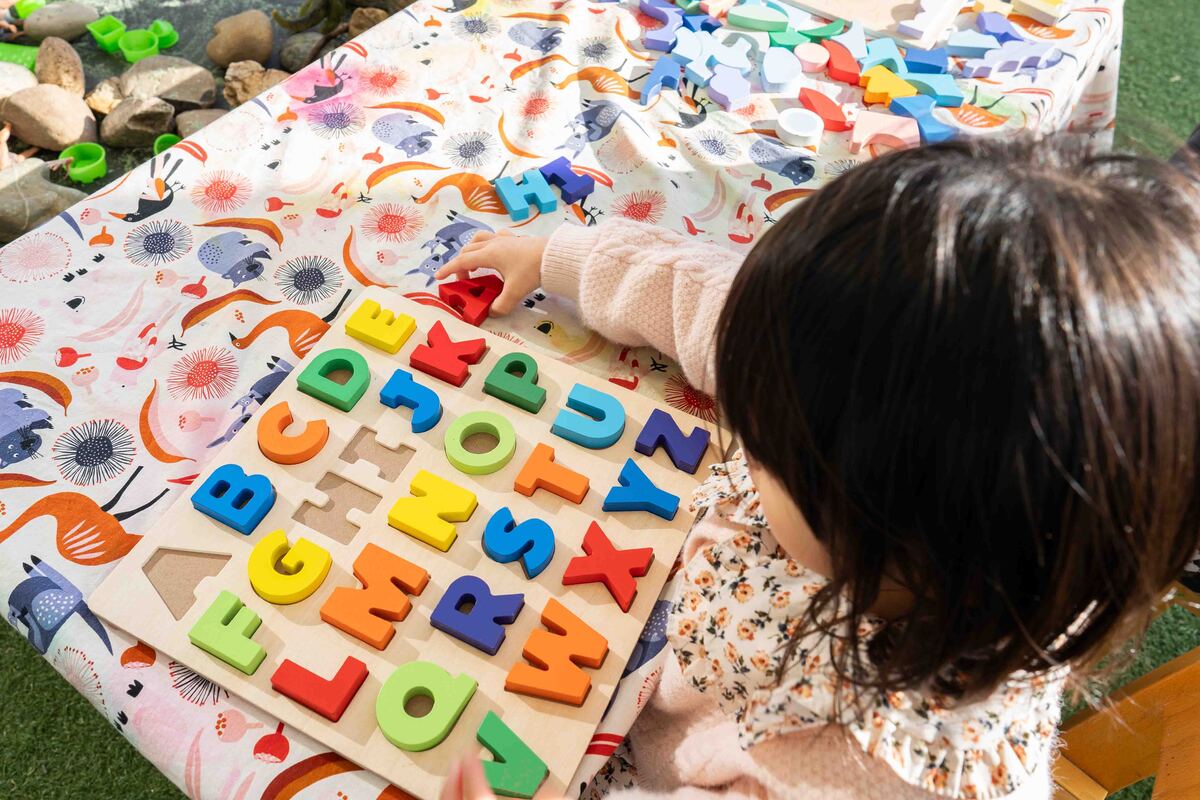
2. Safety Plan
Children getting lost is a common concern for parents, so preparing a safety plan is essential. Firstly, have a calm discussion with your child about what to do if they get lost. However, try not to scare them!
Children’s vivid imaginations may sometimes lead to anxiety. It’s important to be firm yet reassuring in safety education – there’s no need for unnecessary worry for you or your child.
The best safety plans are clear, concise, and easy to remember for the whole family:
- Stop: Remain calm, look around, and assess the situation.
- Find a safe space: This should be away from traffic, bodies of water, high places, or dangerous machines.
- Call out for your parents/caregivers by name: It’s crucial that your child avoids shouting ‘mummy’ or ‘daddy’ in public places, such as shopping centres or supermarkets, to prevent confusion if they get lost (especially if it’s somewhere full of other children). As part of your safety plan, remind them to call out for help in various environments, including quieter places like libraries or theatres. Since children may feel embarrassed, consistently stress that their safety is the utmost priority.
- Look for a mum with children or seek out staff: When your child is in a crowded place and gets lost, encourage them to look for staff members or other mums with children. Teach them to confidently identify and speak with staff for assistance. Emphasise this safety measure regularly when you’re out together. Alternatively, guide your child to seek help from a mother with children. Children tend to feel more secure around their peers and women are statistically more likely to assist lost children.
Additionally, plan a designated meeting spot at every event you attend. This could be a help desk, a ride at an amusement park, or a fountain at the park. However, teaching them which strangers to trust and which to avoid presents challenges around stranger danger.
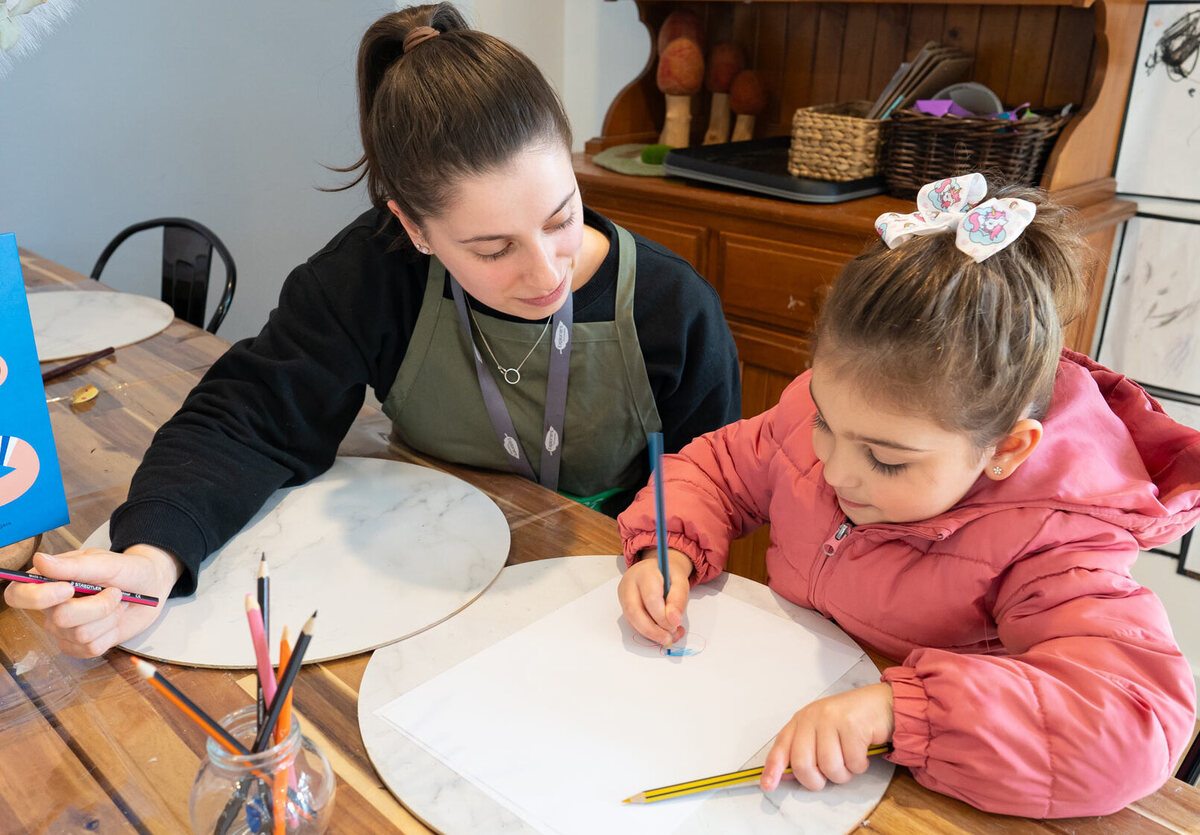
3. Stranger Danger
By age five, children should have an understanding of stranger danger. This is especially important as they enter primary school and begin venturing into social situations (birthday parties, school excursions, etc.) outside of your supervision.
Firstly, calmly discuss what a stranger is with your child. You should be as broad as you can with this definition – a stranger is anyone your family doesn’t know. Stress to your child that if they are alone with an adult they don’t know, they should always exercise caution.
Then, outline the stranger danger guidelines:
- Never take food or drinks from strangers.
- Never answer the door without adult supervision
- Never let a stranger into the house.
- Never get into a stranger’s car, house, or follow them without a parent or trusted guardian present.
- Stress the importance of saying NO if a stranger is making them uncomfortable – run away and shout if they’re feeling uncomfortable or in danger and immediately seek out a trusted adult.
4. How to Call 000 in an Emergency
Teaching children how to respond in emergency situations is a vital life skill. Make sure they understand the significance of the emergency number – 000. Luckily for us Aussies, this is an incredibly easy number to remember, and be sure to regularly remind your child about it. Guide them through basic scenarios and role-play what to do in an emergency.
You can also make a game out of it by using the Government’s official Triple Zero Kids’ Challenge app! This makes learning the ins and outs of calling triple zero fun and memorable for children.
However, also stress that it should only be used in an emergency. Making joke calls or deliberately misusing triple zero is against the law and might land you a hefty fine.
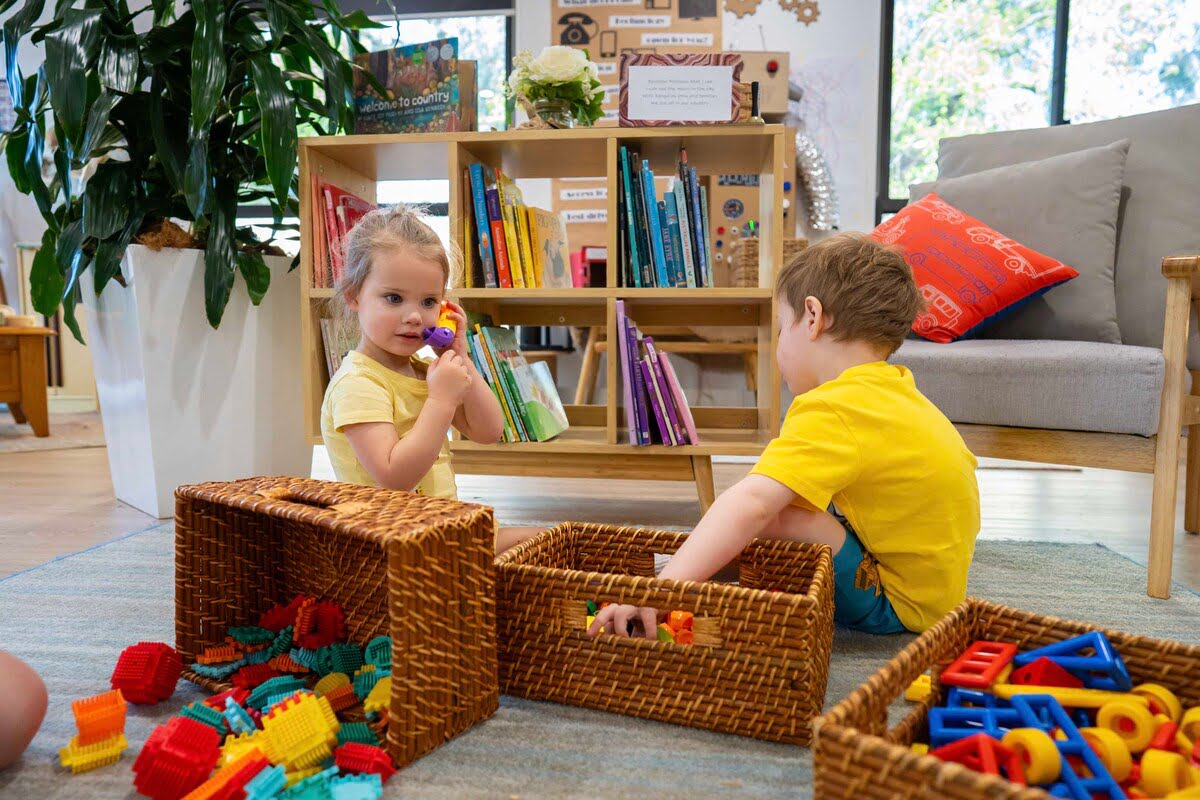
5. Allergies (Their Own or Siblings)
While food allergies can develop at any age, 75% develop before age five. Therefore, if you’re already aware of your child’s food allergies, and it’s a serious allergy, be sure to regularly remind your child of their condition. Additionally, remind them what will happen if they do eat – or in some cases merely come into contact with – their allergen.
This is doubly important for children with siblings who have anaphylactic allergies. As children embark on primary school, birthday parties, and social outings, it’s vital they remember what allergies are, what kinds of foods it may be in, and how to assert themselves in social situations. It’s okay to say no or to remind adults or caregivers of children’s allergies if they suspect it may be in the food they’re about to consume. Also, be sure to regularly go through role plays and drills, especially if they carry an EpiPen.
To learn more about allergens and how to introduce them to toddlers, check out our blog post here.
In conclusion, teaching your 5-year-olds the safety essentials doesn’t have to be daunting. With the right approach and a calm voice, you can inform your child of everything they need to know for a safe and fulfilling childhood.
Remember – preparation is the best defence. Whether you make a song of dance of remembering their phone number or role play calling triple zero, you can take a few easy steps to keep your child happy and safe well into adolescence and beyond.
🍃 To tour one of our beautiful Centres, please click here. Otherwise, check out our website at Explorers Early Learning today!
An Explorers Guide: What to Pack for Childcare
Is the first day of childcare sneaking up on you? Check out our list of must-pack items to ensure a smooth start to early childhood education 👇
After touring the Centre, filling out the forms, and meeting your child’s Educators, the first day of childcare will come before you know it. Although Explorers Early Learning provides the essentials, there’s still children’s individual, medical, and emotional needs to consider.
So, what do you need to pack for your child for childcare?
In this post, we provide a must-read checklist of what to pack for childcare, detailing everything your child needs for a seamless start to this exciting first step in their education journeys!
What Do We Provide?
Explorers offers the following essentials for all the Little Explorers in our care:
- All meals (breakfast, morning tea, lunch, afternoon tea, and a late snack)
- Nappies
- Wipes
- Sunscreen
- Children’s bedding
- S26 Formula (if required)

What Do You Need to Pack for Childcare?
Each child possesses unique cherished items, medical needs, and individual considerations. Therefore, make a checklist of the following items in the weeks leading up to their first day.
Not every item will apply to each child, so it’s crucial to consider various items and clothing, especially for children enrolled five days per week.
Remember to clearly label your child’s belongings!
- Milk bottles and formula/breast milk (if required): Hand breast milk directly to our friendly staff for proper storage; please avoid leaving it in your child’s bag.
- Security/comfort items: This might be a stuffed animal, sentimental blanket, or extra special toy that your child may need for comfort, particularly for sleep times.
- A reusable water bottle filled with water only: We encourage water consumption at Explorers. Pack a clean water bottle for refills throughout the day, but remember to take it home daily for cleaning.
- Nappy cream (if required): Sudocrem is preferred. If not, please ensure your nappy cream is nut-free!
- A sleeping bag: If preferred, you can pack a sleeping bag for your child. Alternatively, Explorers will provide bedding.
- A complete change of clothes: This is essential as our Little Explorers engage in indoor play, outdoor play, and messy play. We ask that children do not wear singlets or open-toed shoes in summer. Children in toilet training should bring three extra sets of clothes and an additional pair of shoes.
- A warm jumper, woolly hat, and jacket for cooler weather: We love getting our Little Explorers out into nature, even in the colder months. Therefore, pack plenty of warm clothing as the chill sets in. Beanies are a favourite, which we provide!
- A wide-brimmed hat or legionnaires hat: Baseball caps provide little coverage during those scorching summers, so please pack a wide-brimmed hat instead.
- The Explorers Wet Bag (provided by Explorers): With all that outdoor play, children are bound to get wet from time to time. We’ve got you covered, just remember to bring a spare set.
- The Explorers Belonging Bag (provided by Explorers): Clearly label all items – you don’t want anything getting lost!
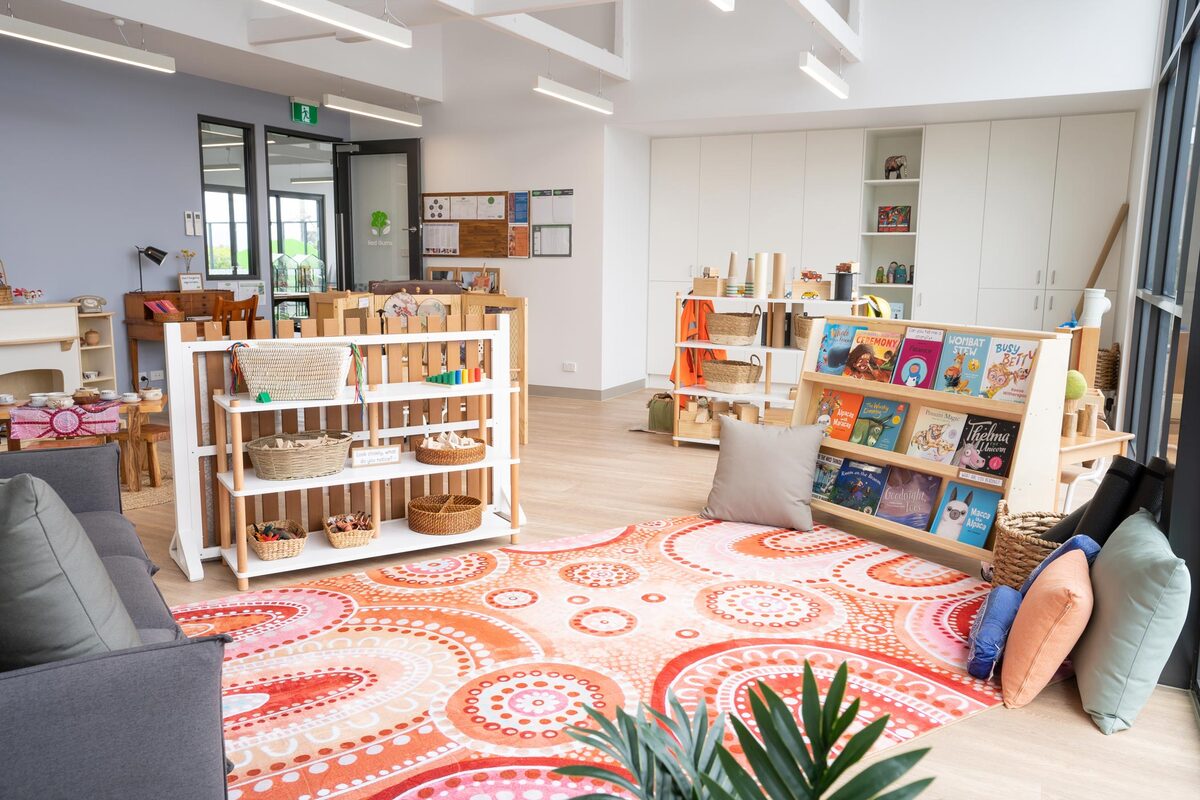
Do You Need to Pack Food or Meals?
Please do not pack any snacks or meals for your child. This is for the safety of all children, Educators, and visitors at the Centre who may have allergies and/or intolerances.
But rest assured, our brilliant chefs prepare all meals with loads of fresh ingredients, ensuring your child won’t go hungry!
What if Your Child Requires Prescription Medication?
If your child requires prescription medication throughout the day, please hand it directly to your child’s Room Leader and speak with reception to fill out the necessary forms. Please do not pack the medication along with your child’s other belongings – this is for children’s safety.
With all these considerations in mind, write out a checklist and speak with your child before the first day regarding each item in their bag. Let them know where everything is and why it’s there, particularly for their comfort items.
Likewise, be sure to speak with our knowledgeable and friendly Educators if you have any concerns. Above all, try not to worry – your child is in good hands. Not only is safety the number one priority at Explorers, they’ll also be receiving premium quality early childhood education to set them up for a lifetime love of learning and exploration.
🍃 To tour one of our beautiful Centres, please click here. Otherwise, check out our website at Explorers Early Learning today!
7 Fun, Free, and Family Friendly Activities in Melbourne this Summer
Looking for summer fun with the family without blowing the budget? Check out our list of free summer activities in Melbourne 👇
Summer is well and truly here in Melbourne. While for some that means holidays by the beach and BBQs with friends, it can also be a stressful time for families. Whether it’s the pricey activities or the need to keep your children occupied over the holidays, summer can take its toll on parent’s minds and budgets.
To ease the nerves, we’ve compiled a list of fun (and free!) summer activities around Melbourne from musical plants to paper dragons. Better yet, many of our top picks are educational, so your child will learn a thing or two while out in the sun – just don’t forget the sunscreen!
1. Myer Christmas Windows
Every year since 1956, Myer host their famous Christmas Windows art exhibit, which has become a mainstay Melbourne tradition. This year, the theme is none other than Bluey!
If you’ve never seen the Windows for yourself, this is the perfect opportunity to get your child out of the house and experiencing the city in a safe, wholesome environment. Naturally, Bluey is fun for the whole family, with plenty for parents to enjoy (as well as some great photo opportunities).
Date: 12 November 2023 – 6 January 2024
Time: 7:30am – 10:00pm
Where: 314-336 Bourke St
Melbourne VIC 3000
2. The Plants
This unique musical installation is one you don’t want to miss. This summer, your family is invited to join in on this one-of-a-kind interactive art installation.
The Plants allows your child to engage with music and nature through experimental instruments, combining digital sensors and organic matter to make genuine, playable plants!
Date: 16 January 2024 – 21 January 2024
Time: 10:00am – 4:00pm, Mon – Sun
Where: Theatres Forecourt
Arts Centre Melbourne
100 St Kilda Street
Southbank 3004
3. Fitzroy Gardens Exploration
If making music out of plants isn’t your style, why not just look at them instead? This summer, take advantage of the warmer weather by exploring Fitzroy Gardens! Start your journey at the Visitor Centre to pick up a pamphlet, collect adventure map, and enjoy breakfast, lunch, or dinner with the family.
Then, take a journey around the Gardens, either following your adventure map or enjoying a leisurely walk among the flowers. Some key attractions around the Gardens include:
- The Conservatory
- Scarred Tree
- Elm Tree Avenues
- Hotham Walk
- Fairies’ Tree
- Model Tudor Village
- River God Fountain
Date: Anytime
Time (Visitor Centre): 9am – 4pm, Mon – Sun
Time (The Gardens): Anytime
Where: Fitzroy Gardens
Wellington Parade
East Melbourne 3002
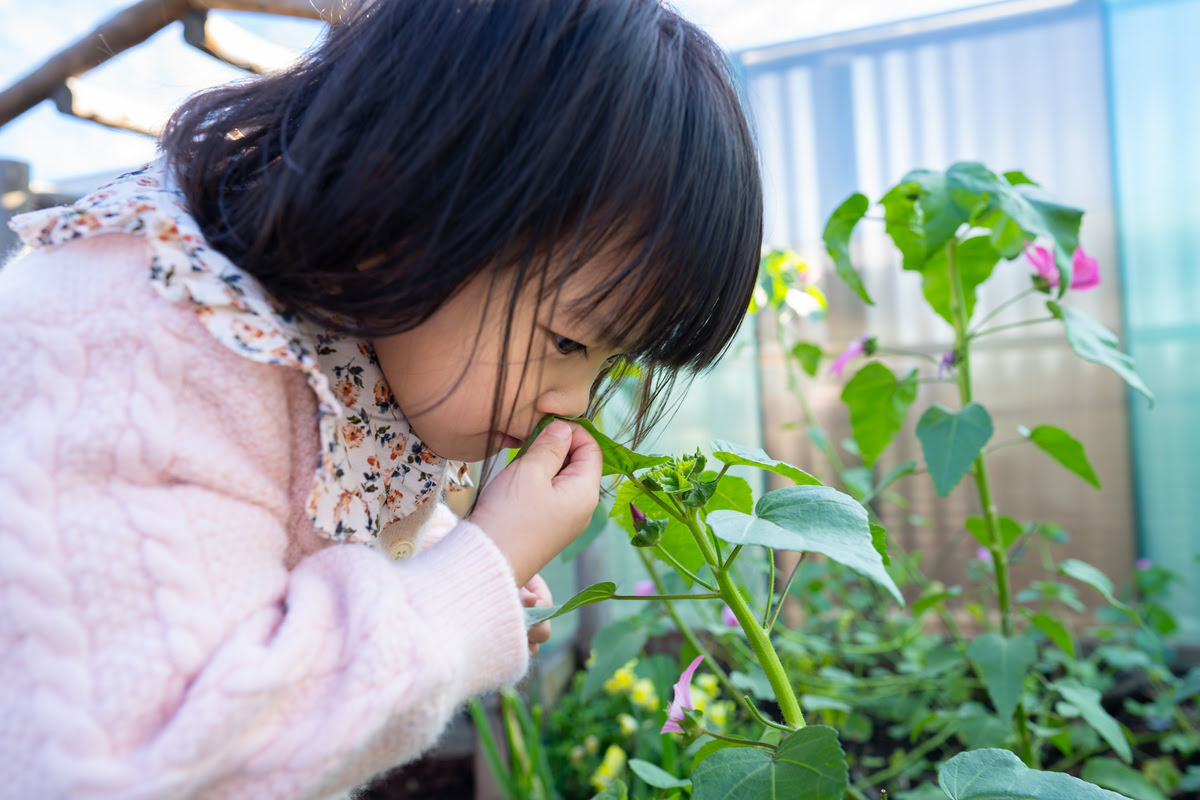
4. Rififi: Jean Jullien for Kids
The National Gallery of Victoria (NGV) is the perfect summer outing to immerse your child in art, culture, and creativity. This summer, they’ve transformed their children’s gallery into a colourful underwater wonderland!
Created by French artist, Jean Jullien, RIFIFI: Jean Jullien for Kids is a truly unique art exhibition. Journey through hallways filled with interactive art, hands-on activities, mind-boggling sea facts, and an Underwater Drawing Club for the children.
Through its lively mixture of art and an important message of conservation, this is a must-visit exhibition this summer.
Date: 20 December 2023 – 7 April 2024
Time: 10am – 5pm, Mon – Sun
Where: National Gallery of Victoria
Ground Level, Children’s Gallery
180 St Kilda Rd
Melbourne 3006
5. Road to Zero Helmet Heroes
Did you know that wearing a helmet reduces the risk of bicycles accidents by 74%? Therefore, if safety is your number one concern for your child this summer, check out the Melbourne Museum’s ‘Road to Zero Helmet Heroes’ holiday program.
Designed for children three to four and up, this experience allows children to try on different helmets and safety gear, interact with props, and take photos with a state-of-the-art digital backdrop!
Importantly, this program teaches children the importance of helmet safety in a fun and memorable way.
Date: 2 January 2024 – 20 January 2024
Time: 10am – 3pm, Mon – Sat
Where: Melbourne Museum
11 Nicholson St
Carlton 3053
6. Lunar New Year – Dragon Festival
Join the festivities as Chinatown celebrates Lunar New Year in February of 2024 – the Year of the Dragon! This is the perfect summer outing, filled with music, art, dancing, great food, local market stalls, and – of course – the festival itself.
Lunar New Year festivals are famous for their rich performances, intricate puppets, and dragon dances – and Chinatown is no exception. Don’t miss this fantastic opportunity to introduce your child to the culturally diverse heart of Melbourne, while also enjoying a day out in the sun!
Date: 11 February 2024
Time: 10am – 9pm
Where: Little Bourke St
Melbourne VIC 3000
7. Playgrounds Around Melbourne
When all else fails, why not visit a playground instead? Melbourne is full of exciting playgrounds and natural play spaces which are perfect before, after, or during a day in the city.
With more than 40 playgrounds in and around the CBD, you can find them located in:
- Carlton
- Docklands
- East Melbourne
- Kensington
- Melbourne
- North Melbourne
- Parkville
- Southbank
- South Yarra
- West Melbourne
Date: Anytime
Time: Anytime
Where: Click here for the full list of playgrounds located in and around the city.
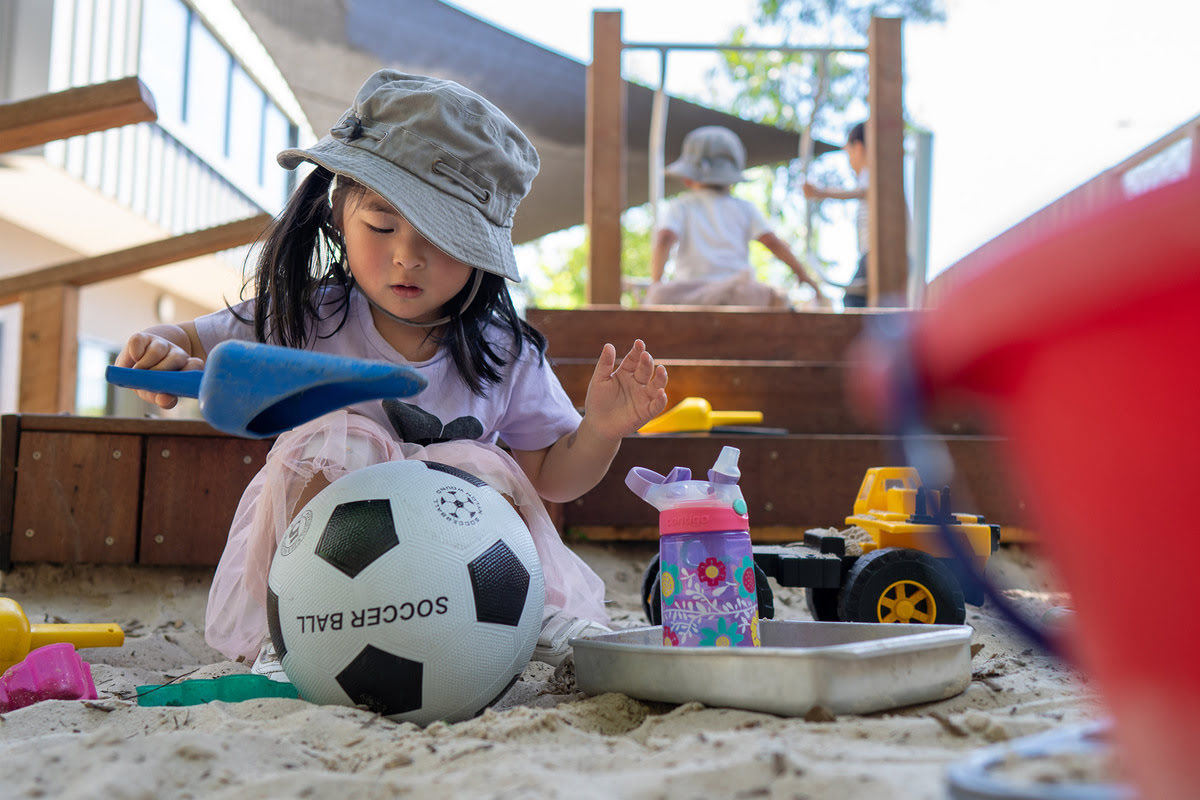
As summer unfolds in Melbourne, the pressure on parents to find affordable and engaging activities for children can feel overwhelming. However, by incorporating a few of these free activities, you can ease the burden this summer without sacrificing the fun.
From the timeless charm of Myer Christmas Windows to ushering in the Year of the Dragon, take the time this summer to embrace all the free and interactive experiences Melbourne has to offer. Moreover, these experiences are perfect for the whole family, so be sure to strike a pose with Bluey or take a trip down the slide at the playground – you’re only as young as you feel!
🍃 To tour one of our beautiful Centres, please click here. Otherwise, check out our website at Explorers Early Learning today!
9 Sustainable DIY Christmas Decorations for Your Family
Tired of the same old plastic, store-bought gifts? Check out our list of sustainable Christmas decorations that won’t hurt the planet 👇
It’s the festive season again, and that means one thing – decorations! While it’s tempting to deck out the house with lights and store-bought ornaments, they’re not always the most sustainable choice. So why not take matters into your own hands this Christmas?
Through these do-it-yourself (DIY) projects, you and your child can spend some quality time together while also reducing your Christmas carbon footprint.
So, here are our top 9 sustainable (and budget-friendly) DIY Christmas decorations for you and your family this festive season!
1. Recycled Paper Ornaments
Do you have spare paper lying around the house? You’d be surprised how much you might find stuffed in drawers or hiding in the back of cupboards. Your child can help by searching the house for:
- Old newspapers
- Magazines
- Junk mail
- Grocery receipts
- Used wrapping paper
Once you’ve got your desired paper, recycle it by cutting it into festive shapes, layer them, and secure them together with non-toxic glue. Then, simply punch a hole through, string them together, and invite your child to write a small message to make it extra special.
Once complete, hang it from the tree and you’ve got unique, conversation-starting decorations!
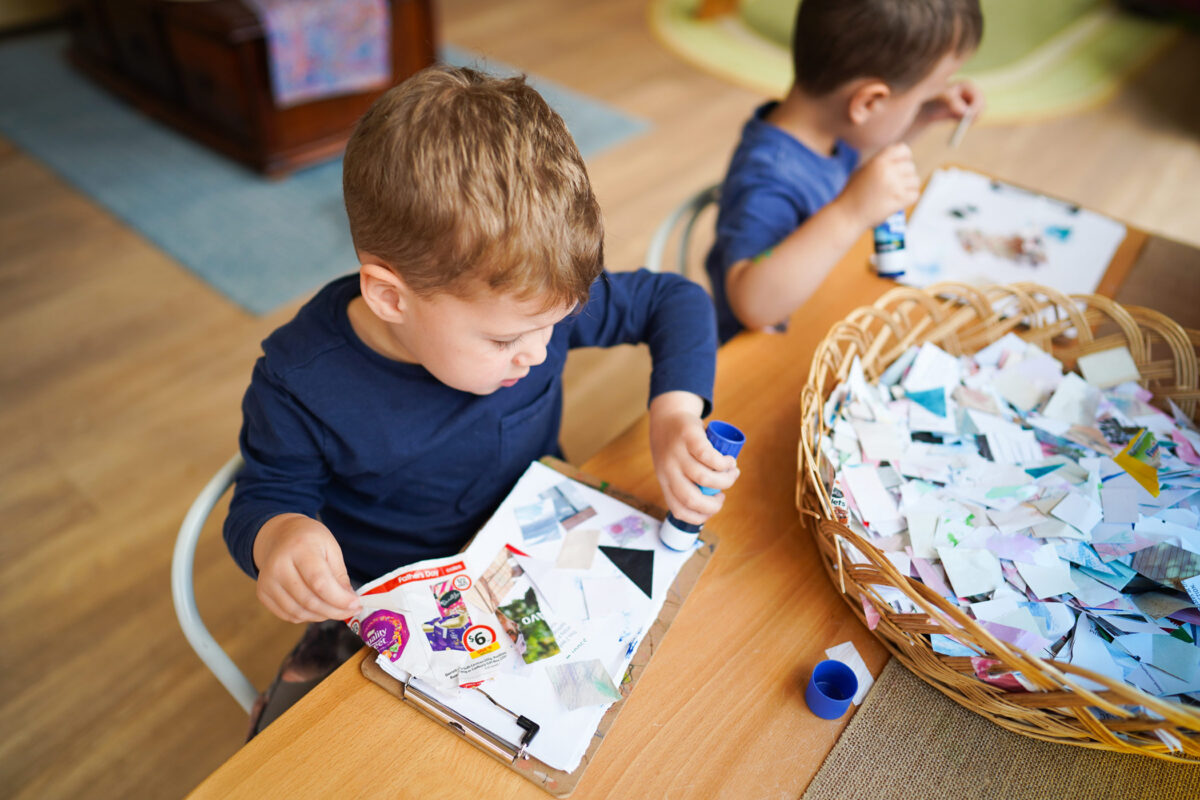
2. Upcycled Glass Jar Lanterns
Don’t throw out that jam jar! Instead, remove any labels, wash it with soapy water, and leave it out to dry. Then, you and your child can use child-friendly paint to draw Christmassy shapes such as reindeer or wise men’s stars. Alternatively, you can decorate the jar with festive ribbons, string, or even googly eyes.
After your jar is clean and decorated, just add a tea light candle inside for a cozy finishing touch. These upcycled jar lanterns help reduce waste and allow your child to express their creativity.
3. Homemade Wreaths
Collect fallen pinecones, twigs, leaves, or seed pods from your backyard or the park to create a natural and rustic DIY wreath.
Once you’ve gathered the materials, all you need to do is cut a hole in some old cardboard and glue them on. You can them customise your DIY wreath with a festive bow or homemade ornaments. Finally, hang on your front door or around the house for a subtle festive touch.
4. Repurposed Wine Cork Ornaments
Don’t bin the corks after your next cheese and wine night. Instead, use them as a basis for some unique Christmas decorations. Paint and decorate them as reindeer, snowmen, elves, or Mr. and Mr Claus! Cotton wool is perfect for hair or Santa’s bushy white beard.
When you’re finished, add your cork creations to shelves, tables, or run a string through them to hang from the Christmas tree for sentimental and sustainable mementos for years to come.
5. Clothespin Snowflakes
Do you have more wooden clothespins than you could ever use? With a few simple steps, you can transform these into unique tree decorations!
Start by gluing the clothespins together in a radial pattern so they resemble snowflakes. Then, you and your child can paint them white and aqua with water-based paints. Once they’re dry, run a string through the tip of one of the pins and you’ve got eco-friendly additions to the tree!
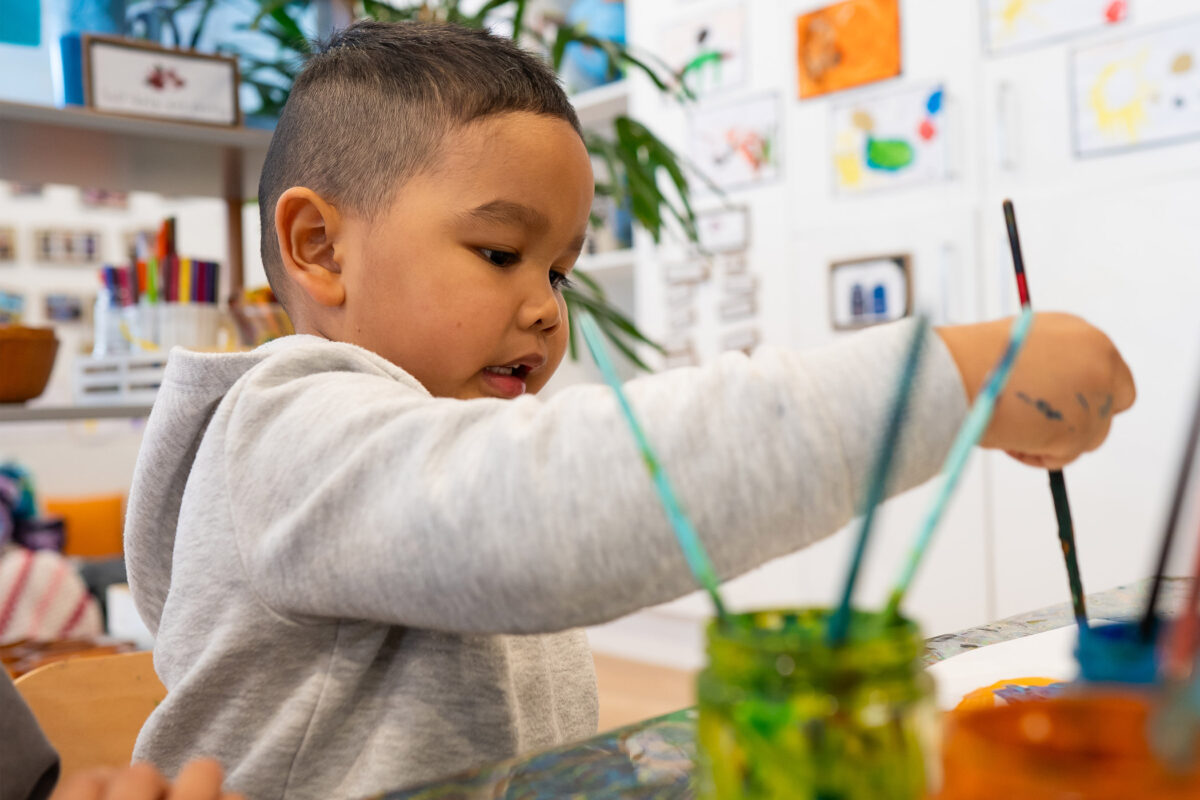
6. Cardboard Christmas Tree
While this might not replace the pine tree just yet, a cardboard Christmas tree is a wonderful addition to a child’s room, coffee table, or living room. Instead of purchasing a mini plastic tree, gather some old cardboard from around the house to construct your own.
Start by drawing out four Christmas tree stencils on cardboard, then carefully cut them out. After you’ve glued them together, invite your child to help paint it green, white, or whichever colour you wish. Decorate it with buttons, ribbons, or anything festive you can find – and don’t forget to put some presents under it!
7. Dried Orange Decorations
This unique festive decoration is a must-have this Christmas. Simply cut a couple of oranges into slices and squeeze as much fresh juice as you can to enjoy. Instead of throwing out the leftover slices, dry them off and place in an oven at 93°C for 2-4 hours, flipping every thirty minutes. Once dried, place on a cooling rack until they’re at room temperature.
Afterwards, pierce your slices with a needle and string them together. Hang them over a fireplace, from shelves, or anywhere around the house for a touch of colour that can easily be preserved in air-safe containers for next year. Alternatively, they’re perfect for compost!
8. Oven Mitt Christmas Stockings
At the end of the day, Christmas stockings exist to hold presents. In other words, children don’t really care what shape they are, so long as they’re filled with goodies! So, why not upcycle an old oven mitt lying around the house or from an op shop and spice it up with a festive touch?
Simply glue on old buttons, add ribbons, or sew on festive fabric shapes and voila – you’ve got yourself a makeshift Christmas stocking!
9. Fabric Scrap Garland
Repurpose old clothing and tea towels into a colourful – and eco-friendly – fabric scrap garland. Begin by cutting your fabric of choice into festive shapes, triangles, or anything you think will brighten up the house. Feel free to get creative and invite your child to help brainstorm shapes and sizes while you use the scissors.
Then, pierce a needle through each and string them together. These are perfect for above the fireplace, over the television, across a bookshelf, or anywhere in the house that needs a burst of Christmas cheer.
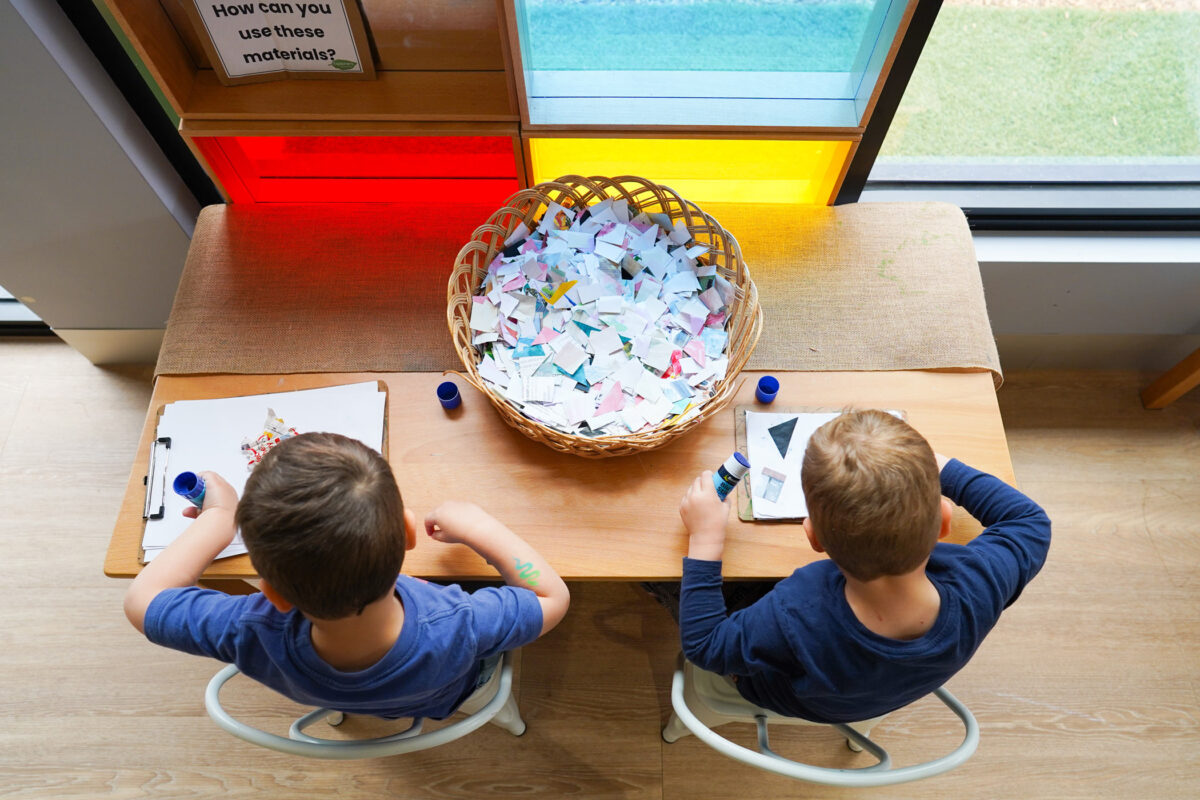
Ultimately, Christmas doesn’t have to be a time of excess and needless waste. Rather, by following some – or all – of the items in our list, you can decorate the tree and brighten up your home for the festive season. Better yet, you can do so without spending a fortune on plastic, mass-produced decorations.
So why not get crafty this Christmas and create some special decorations that you can look back on in years to come? And who knows, maybe someday that oven mitt Christmas stocking might just become a family heirloom!
Merry Christmas 🎅
🍃 To tour one of our beautiful Centres, please click here. Otherwise, check out our website at Explorers Early Learning today!
Discovering December: 7 Festive Holidays from Around the World
Ever wondered what people celebrate in December other than Christmas? Check out our list of December festivities from around the globe 👇
When you think of December holidays, do you picture gingerbread houses and Rudolf the Red-Nosed Reindeer? It’s no surprise if you did. After all, Christmas is celebrated in more than 160 countries around the world.
However, December is home to so much more than just our old friend Santa Claus. From Kwanza to St. Lucia’s Day, December is a time for reflection and celebration across nations, cultures, and peoples.
In this post, we dive into 7 December holidays from around the world to provide some insight into how different societies celebrate this wonderful time of family, community, and giving.
1. Kwanzaa
Kwanzaa is an annual celebration of African-American culture which is recognised between December 26 and January 1. Though it’s mainly celebrated in the United States, it’s gradually spread to other nations with large African populations such as the United Kingdom, Jamica, France, Canada, and Brazil.
The holiday first originated in 1966 by author and professor Maulana Karenga. Karenga drew heavily from many traditional African values and cultures when creating the holiday. In fact, the word kwanza comes from the Swahili phrase for ‘first fruits’. Karenga added an extra ‘a’ so each letter (and each candle of the Kinara) would symbolise one of the seven values of Kwanzaa:
- Unity (umoja)
- Self-Determination (kujichagulia)
- Collective Work and Responsibility (ujima)
- Cooperative Economics (ujamaa)
- Purpose (nia)
- Creativity (kuumba)
- Faith (imani)
2. Las Posadas
Las Posadas (meaning ‘inn’ or ‘lodging’ in Spanish) is an annual festival celebrated in Mexico and some parts of the United States between December 16 and December 24. The festival elaborately recreates Joseph and Mary’s journey from Nazareth to the stable in Bethlehem.
To recreate the biblical event, a child is dressed as an angel to lead the town’s people through the streets. More children follow with candles to stop at houses and sing songs. Afterwards, the children break open Piñatas shaped like wise men’s stars which are filled with lollies, toys, and even money!
3. Hanukkah
Hanukkah is the Jewish Festival of Lights which dates all the way back to 175 BCE. It’s endured for thousands of years and is celebrated annually on the 25th day of Kislev (the ninth month of the Hebrew calendar) which usually occurs in late November to early December. However, it’s important to note that Hanukkah isn’t ‘Jewish Christmas’. Rather, it’s one of many important Jewish celebrations, such as Passover and Yom Kippur.
In 2023, Hanukkah begins on the evening of December 7 and ends December 15.
During the eight-day holiday, families gather each night to light the menorah, sing songs, and enjoy traditional Jewish foods such as deep-fried jam-filled donuts (sufganiyot), potato pancakes (latkes), and chocolate coins (gelt).
4. Bodhi Day
Bodhi Day is an annual Buddhist holiday recognised on December 8 which celebrates the enlightenment of Gautama Buddha back in 596 BCE. During this period, Buddha sat beneath a Bodhi tree in Bodh Gaya, Northern India, for seven days and mediated.
In modern times, Bodhi Day is celebrated in many parts of the Western World, predominantly Japan. In Buddhist homes during Bodhi Day, you’ll find coloured lights which are turned on each evening starting December 8 and continue for 30 days. Additionally, a candle is added each night to symbolise Buddha’s enlightenment.
Rice and milk are commonplace during Bodhi Day, commemorating the first meal Buddha ate after the week-long meditation. You’ll also find homes filled with beautiful mini-Bodhi trees!
5. St. Nicholas Day
No December holidays list would be complete without a cameo from St. Nick. This feast day is dedicated to St. Nicholas, a saint famous for his selfless nature, on December 5 or 6 in Western nations, and December 19 in some European countries using traditional church calendars.
St Nicholas Day is a time for parades, mass, and gift-giving. One of the more famous traditions is children leaving out pillows or shoes which will be filled with presents (if they’ve been nice)!
However, while St. Nicholas was known as a patron saint across Europe for centuries, it wasn’t until 1773 that the festive spirit washed up on American shores. Soon after, Dutch families gathered to celebrate St. Nicholas Day, who went by the Dutch name ‘Sinter Klass’, a shortened form of ‘Sint Nikolaas’. Over time, this naturally evolved into the Santa Claus that we know and love today.
6. Saturnalia
This is one holiday you probably haven’t heard of. However, it’s impact on modern day celebrations of Christmas can’t be understated. Saturnalia was an annual celebration of Saturn, the Roman god of agriculture, and was the most popular holiday on the Ancient Roman calendar. In fact, it’s still celebrated to this day!
Although it started as a single day celebration, it eventually expanded to a weeklong event from 17 December to 24 December.
The Romans celebrated by singing, playing music, feasting, and exchanging gifts. Additionally, Romans would shed their togas in favour of red and green clothes. Moreover, they decorated their homes with wreaths and evergreen branches – all mainstay symbols of modern-day Christmas!
7. St Lucia’s Day
St Lucia’s Day is a Scandinavian festival of lights celebrated annually on December 13 in honour of St. Lucia (St. Lucy). To celebrate, towns in Sweden, Norway, and Finland organise a procession led by a St Lucia designee who is elected by the town. The designee will then lead the procession, followed by girls wearing lighted wreaths and white robes while singing songs.
After the festival lights up the town, families gather while one of their daughters (usually the eldest) serves coffee, baked goods, saffron bread, and ginger cookies to other family members – symbolising St. Lucia’s giving nature all the way back in 304 CE.
Ultimately, no matter where or what you celebrate, December is the perfect time of year to spend with the ones who mean the most. So, take the time to share, celebrate, and let family and friends know how much they mean to you – Happy holidays!
🍃 To tour one of our beautiful Centres, please click here. Otherwise, check out our website at Explorers Early Learning today!
10 Essential Tips for Flying with Toddlers and Young Children
Worried about how your toddler will fare up in the air? Read on for our must-read tips from packing to landing 🛫
Planning a family holiday interstate or overseas is a buzz of anticipation and excitement. However, it also presents challenges if you have a toddler in tow. From squishy cabins to long lines, flying with toddlers and young children can take a heavy toll on the whole family.
However, many stressful flights with toddlers often arise from poor planning or little preparation. So, we’ve compiled a handy list of tips and tricks to ensure you and your toddler are fully prepared for take-off this holiday season!
1. Fly Direct (If You Can)
While it may seem like a good idea to have a layover where your toddler can rest up between long flights – or burn off energy – it may only compound the issue as they have to relive the experience all over again. And if you’re doing the same on return, what could be two flights suddenly balloons to four, five, or as many as six. And when you have a fidgety toddler, every minute in the air counts.
Therefore, fly direct if you have the choice. This increases the likelihood of a stress-free flight as your toddler may sleep for most, if not all, of the trip. And if your toddler is having a hard time, it’s better to get it over and done with.
2. Get up Early (Or Fly Nights)
If your toddler’s an early riser, try to book an early departure (if possible). This lessens the likelihood of delays, which can be stressful whether you’re four or forty. According to the Huffington Post and AirHelp, delays peak at around 6pm, and are at their lowest between 6am – 11am. This is largely due to less runway traffic, more planes ready to fly from the night before, and less planes in the air overall.
Conversely, if you’re traveling long-haul, consider a late-night flight. This can work in your favour as toddlers will be exhausted from a long day of packing and prepping. If you’re lucky, they’ll sleep through the whole thing!
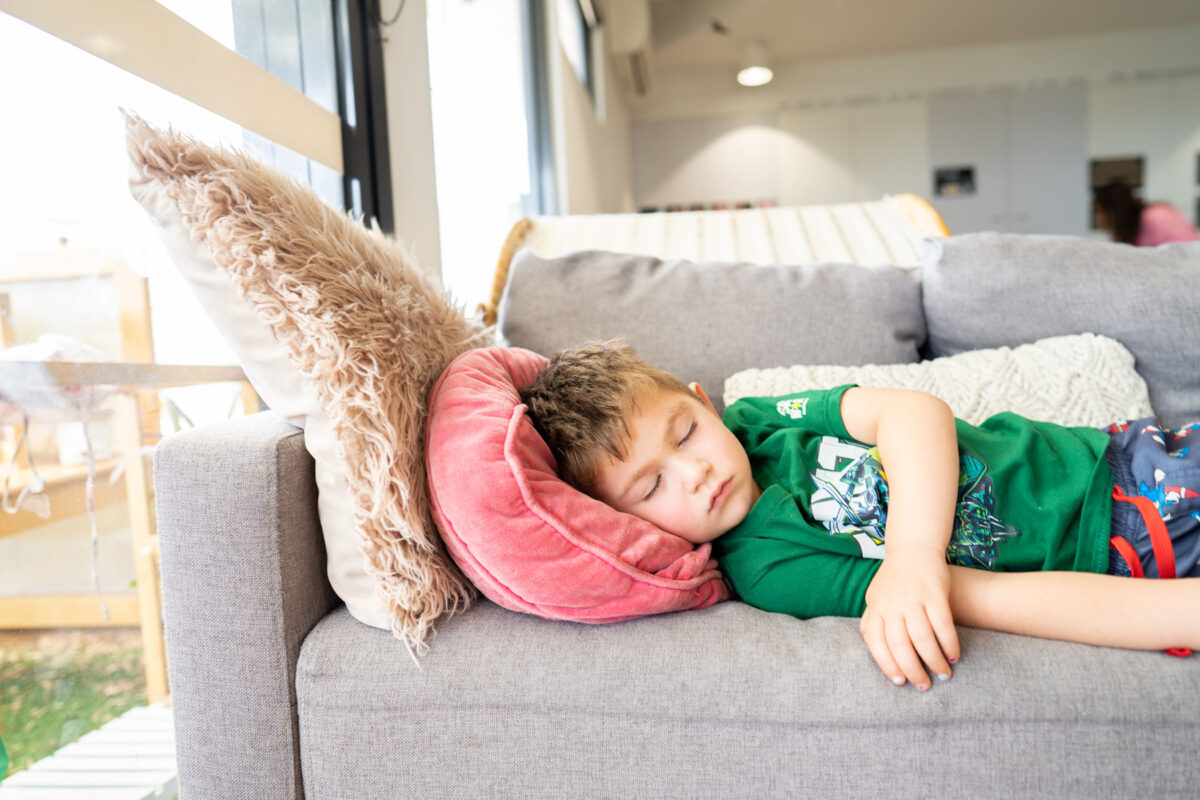
3. Wear Comfy Clothing
Dress your toddler in comfortable layers for the flight. Airplane cabins can vary in temperature, so having extra layers allows you to adjust accordingly – this applies to parents too!
Moreover, consider packing a familiar blanket or stuffed animal for added comfort and a sense of security, along with any special pillows or neck cushions to ensure your toddler gets their rest.
4. Consider the Window Seat
While the aisle seat provides easier access to the bathroom, it isn’t ideal for young children.
Often, toddlers don’t quite know how to keep their hands and feet to themselves. Therefore, they might dangle them in the aisles and accidently knock passing passengers or flight attendants. Importantly, this can be dangerous if they’re carrying hot food or drinks. At the very least it’ll lead to some awkward apologies if your toddler kicks a stranger.
Consider seating your toddler by a window to keep them entertained. Alternatively, a seat between two parents/guardians shares the responsibility of keeping them busy.
5. Pack Healthy Snacks
While most airlines will provide meals on longer flights, it’s a good idea to pack extra snacks and drinks for your toddler with plenty of variety. Additionally, be sure to pack healthy options along with a few treats to keep them satisfied during the flight and don’t forget a spill-proof cup to avoid any potential messes.
However, keep your toddler’s nutrition in mind when packing snacks. Foods high in sugar are likely to cause sugar highs and crashes, so try to bring snacks high in protein and healthy fats and minimise sweets.
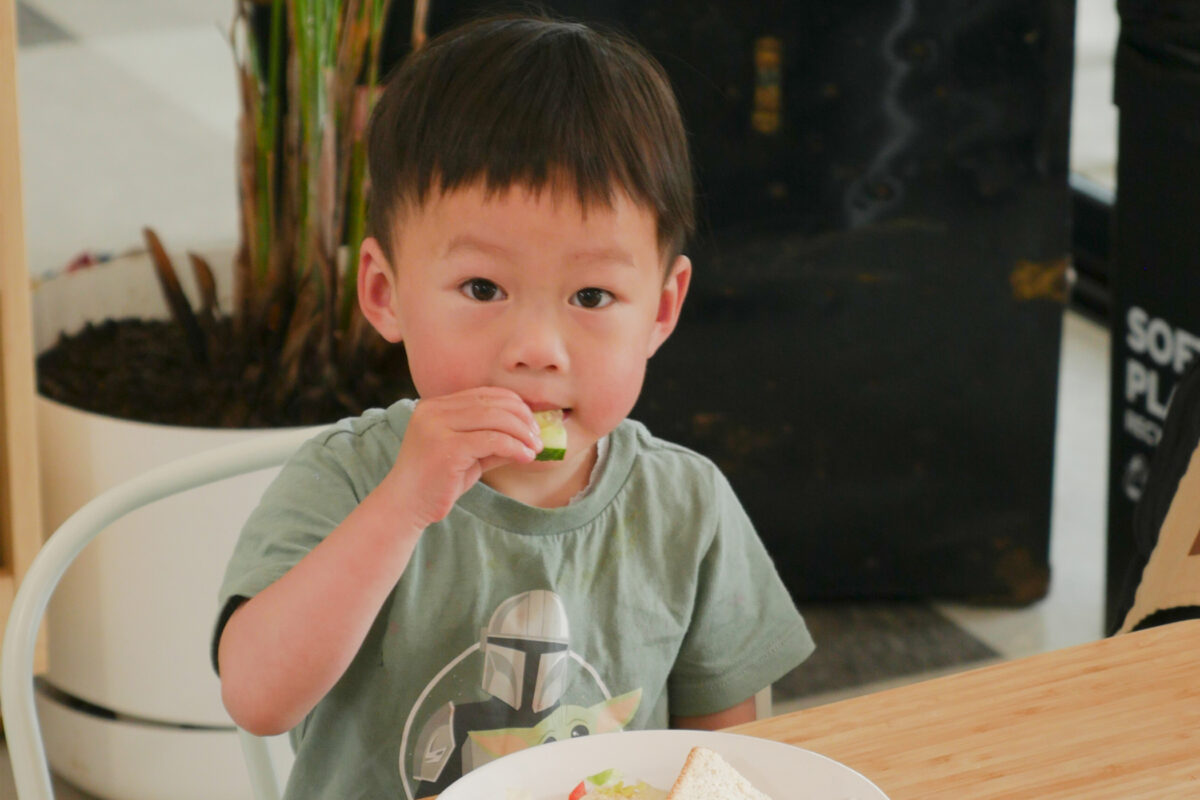
6. Remember – Entertainment is Key
When flying with toddlers, activities are a great way to spark excitement and – most importantly – serve as an educational distraction during those long flights. A little novelty goes a long way for a two-year-old and something as simple as a busy book, colouring activity, sticker book, or magnetic drawing board can do wonders for those long and sometimes arduous flights.
Many airlines provide free children’s packs that might contain some activity books and small toys. If you’re not sure, it never hurts to ask your flight attendant.
Additionally, while too much screen time can impact toddlers long-term, the occasional longer stint isn’t the end of the world – especially if it keeps your toddler calm and you sane on a long flight! If you find your toddler loves watching educational YouTube videos or colouring in on an iPad, try not to feel guilty – just be sure to bring toddler-friendly headphones.
7. Talk to Your Toddler Beforehand
As is the case with many toddlers’ outbursts, much of the anxiety arises from experiencing something unexpected. Therefore, if you leave your toddler in the dark, they won’t be mentally or emotionally prepared for the experience.
Instead, have a sit down and talk with your toddler about exactly what to expect. Map out the journey from packing to landing. It’s a pretty exciting and amazing experience for toddlers, so try and lean into the fantastical and exciting elements. Picture books are a handy way to build on the discussion and spark excitement:
- Maisy Goes by Plane by Lucy Cousins
- Hello World! Planes and Other Flying Machines by Jill McDonald
- Where Do Jet Planes Sleep at Night by Brianna Caplan Sayres
- Little World: At the Airport by Ladybird
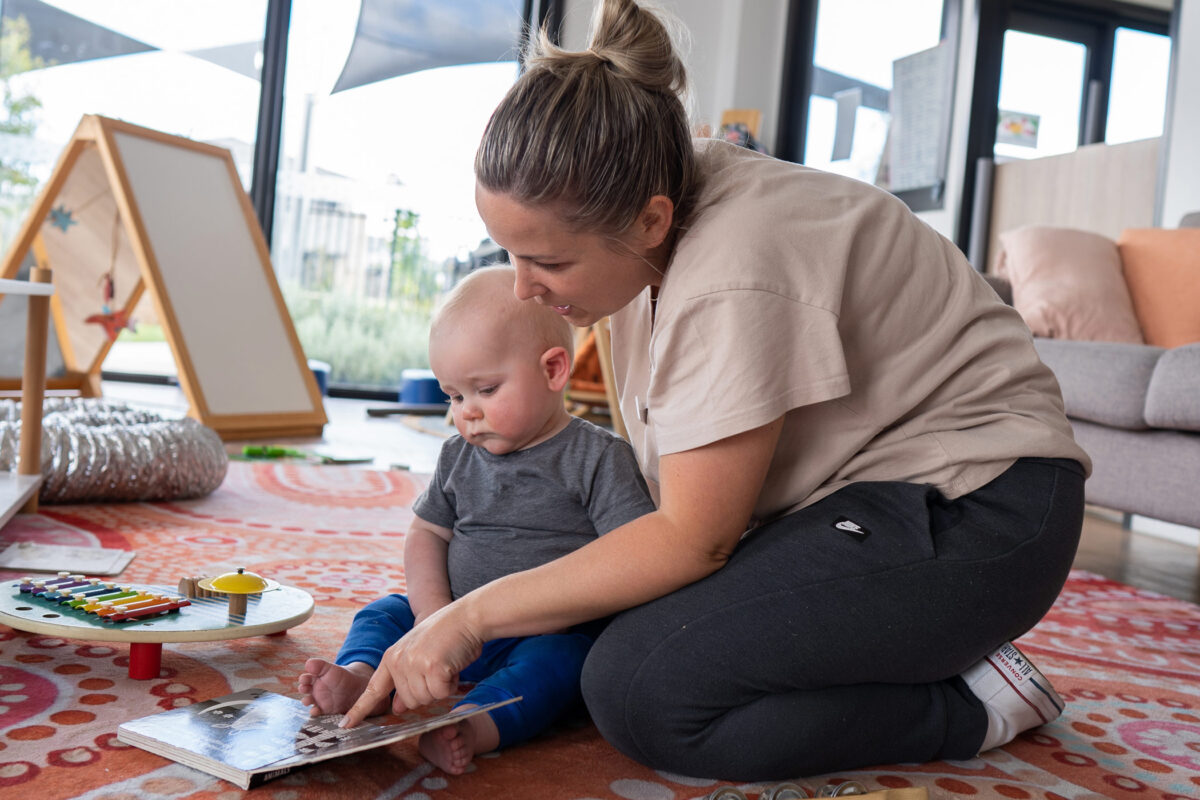
8. Board Last
Most airlines will invite families traveling with young children to board first. However, if you’re travelling with a partner or family members, have them board with your carry-on essentials first so you and your toddler can board last.
Simply put, your toddler will spend less time sitting down and strapped in. Additionally, the cabin can quickly feel a little claustrophobic for toddlers with all the noise and commotion of complete strangers talking and stowing away their carry-on baggage.
9. To Gate Check or Not To Gate Check?
While it’s tempting to baggage check your stroller or baby gear, opt for gate checking if your airline allows it (be sure to research this beforehand). Gate checking a stroller or bulky baby gear will save you a lot of stress and worry as you won’t have to carry your toddler around after checking your baggage. Also, it’ll be waiting for you once you land.
Just be sure to tag your baby gear appropriately and to speak with the gate agent at the airport.
10. Stay Calm and Be Prepared
Be sure to anticipate that there may be challenging moments during the flight. However, instead of agonising over something that may not even happen, try and stay calm and be prepared for unexpected situations.
Bring a small first aid kit, extra nappies, and some changes of clothes in case of spills or accidents. Importantly, keeping calm fosters a positive and grounding atmosphere for both you and your toddler.
Ultimately, flying with a toddler doesn’t need to come with all the stress. With proper preparation, the right mindset, and plenty of patience, you can give your family the best chance of a cruisy flight this summer. After all, holidays are supposed to be for rest and relaxation! So, keep these tips and tricks in mind for a stress-free, memory-filled holiday season. Happy travels!
🍃 To tour one of our beautiful Centres, please click here. Otherwise, check out our website at Explorers Early Learning today!
25 STEAM-Themed World Space Week Books for Toddlers
Paper mâché planets and homemade star maps can only mean one thing – it’s Space Week! To celebrate this astronomical event, we’ve compiled our list of must-read STEAM books to get your toddler thinking big 🚀
World Space Week is the largest space event in the world with more than 11,221 events in 87 nations. Celebrated annually between October 4 – 10, Space Week is the perfect opportunity to ignite your child’s curiosity.
While experiments and trips to the museum are fun ways to get into the Space Week spirit, the first step is to get your toddler thinking big. And what better way than to dive into the wide world of books?
In this post, we’ve listed our top Space Week books which are fun and educational. Whether your child is a budding inventor or the next H.G. Wells, there’s something on this STEAM (science, technology, engineering, arts, maths) list for everyone!
Science
Children love science. From dazzling chemical reactions to mind-boggling facts about the Milky Way, it’s no wonder that children get lost for hours in these captivating reads. Additionally, a keen interest in science boosts children’s curiosity and imagination, so it’s always worth encouraging.
Whether it’s exploring the solar system, physics, or ecosystems, there’s so many science books to choose from:
- 8 Little Planets by Chris Ferrie, illustrated by Lizzy Doyle
- The Solar System: A Lift-the-Flap Book by Steven Wood
- Big Ideas for Little Environmentalists: Ecosystems with Rachel Carson by Maureen McQuerry, illustrated by Robin Rosenthal
- ABCs of Physics by Chris Ferrie
- Priddy Explorers: Space by Roger Priddy

Technology
In today’s digital age, technology is everywhere. It shapes the way we live and interact with the world. Therefore, introducing your toddler to technology at an early age can set the foundation for success in school and the workplace.
From exploring the inner workings of robots to understanding coding; technology books open a world of possibilities for toddlers:
- Robots, Robots, Everywhere! by Sue Fliess and Bob Staake
- What Do Machines Do All Day? by Jo Nelson, illustrated by Aleksander Savic
- Peekaboo Car by Ingela P Arrhenius and Camilla Reid
- Help! My Robots are Lost in the City! by Webber Books
- Twinkle, Twinkle, Robot Beep by Jeffery Burton, illustrated by Zoe Waring
Engineering
Engineering is all about creativity and problem-solving. It’s the art of designing, building, and making things work. Therefore, introducing engineering concepts to toddlers fosters creativity, curiosity, and critical thinking skills.
Whether it’s building with blocks or learning about simple machines, engineering books spark ingenuity and inspires little builders and inventors:
- Baby Loves Structural Engineering! by Ruth Spiro, illustrated by Irene Chan
- Rocket Science for Babies by Chris Ferrie
- Things that Go by Becky Davies, illustrated by Mei Stoyva
- ABCs of Engineering by Chris Ferrie
- Baby Loves Coding! by Ruth Spiro

Arts
The world of arts is a boundless realm of imagination and self-expression. Encouraging your toddler to explore their artistic side is a journey of discovery. Additionally, arts encompass a wide range of activities from painting and drawing to music and dance.
These books explore space in their own unique ways with differing art styles, storytelling techniques, and points-of-view. Therefore, your child will gain a deeper appreciation for the beauty of artistic expression and how books – just one artform – can tell a deeper story:
- Life on Mars by Jon Agee
- Curious George and the Rocket by Margret Rey, illustrated by H. A. Rey
- Meanwhile Back on Earth by Oliver Jeffers
- Pop-up Peekaboo! Space by DK
- Bizzy Bear: Space Rocket by Benji Davies
Maths
Maths is the language of the universe, and it’s never too early to introduce your toddler to its wonders. Likewise, maths isn’t just about numbers. It’s about patterns, shapes, and problem-solving.
Importantly, these maths books make understanding the foundations of academic success fun! Before long, you might even find your child looking forward to solving equations and counting all on their own:
- Peck Peck Peck by Lucy Cousins
- ABCs of Mathematics by Chris Ferrie
- How Many Legs? by Kes Grey, illustrated by Jim Field
- Space Baby: Blast Off! by Pat-a-Cake, illustrated by Kat Uno
- One is a Snail, Ten is a Crab by April Pulley Sayre and Randy Cecil

Overall, exploring these spacey, STEAM-themed books is a fantastic way to nurture your toddler’s curiosity and a life-long love for learning. Science, technology, engineering, arts, and maths are all integral parts of the rich tapestry of knowledge which shape your child’s understanding of the world. As you embark on this literary adventure, remember to encourage questions and engage in discussion with your child.
So why not dive into these captivating books together and watch your child’s imagination light the darkest corners of the great unknown?
🍃 To tour one of our beautiful Centres, please click here. Otherwise, check out our website to register your interest at Explorers Early Learning today!
13 Must-Read Books for Book Week 2023
Read, Grow, Inspire. This year’s Book Week theme is all about fostering future creatives. To give your child the best start in their creative journey, check out our list of 13 must-read books for Book Week 2023 👇
Book Week has exploded in popularity in recent years with school and library events, activities, and dress-up parades taking centre stage. However, it’s important to remember the true purpose of Book Week which is, of course, reading!
This year’s Book Week theme – Read, Grow, Inspire – perfectly illustrates the importance of reading and engaging with stories from an early age. In fact, experts suggest that reading with toddlers promotes bonding and builds lasting relationships.
To celebrate Book Week 2023, we’ve compiled a list of 13 books that every child should read. The stories vary from rhyming cats to wombat stew, while also planning a costume or two!
1. How the Birds Got Their Colours by Mary Albert and Pamela Lofts
This Dreaming story is a wonderful introduction for children into the incredible world of Indigenous Australian culture. Mary Albert, a woman of the Bardi people, beautifully combines retellings of Dreamtime stories and children’s paintings to form a mosaic of Indigenous heritage.
If you have a passion for the more extravagant costumes, honour this important story by dressing your child as their favourite bird – just make sure to use plenty of colour!
2. The Very Hungry Caterpillar by Eric Carle
At just 224 words long, Eric Carle’s The Very Hungry Caterpillar has endured as a bestseller for over 50 years. Carle’s story cleverly teaches children the days of the week, counting, patterns, and healthy eating while also being a captivating read for adults.
The best part of this costume is its simplicity. All you need is a stripy green shirt and a few materials to make the crown. Alternatively, there’s plenty of The Very Hungry Caterpillar costumes in stores or online.
3. The Rainbow Fish by Marcus Pfister
One look at The Rainbow Fish proves it’s a book like no other. Pfister’s ingenious use of holographic foil for the shimmering scales meant this book was destined for greatness. But like the Rainbow Fish himself, it’s about what’s beneath the surface. Take a journey of self-discovery with your child and delve into The Rainbow Fish to learn all about sharing and the power of friendship.
Dress your child as the glittering Rainbow Fish complete with shiny scales, and use the opportunity to discuss the importance of kindness and generosity.

4. Wombat Stew by Marcia K. Vaughan and Pamela Lofts
Marcia K. Vaughan’s Wombat Stew seamlessly intertwines Australian wildlife into a story of teamwork, cunning, and whimsy. This is one to read aloud with its captivating illustrations and unique rhymes!
Grab a onesie and encourage your child to dress up as a mischievous wombat, a cheeky dingo, a friendly platypus, or any of the other Australian animals featured in Wombat Stew. The best part about this is it also reduces waste as they’ll get plenty of use out of a cosy onesie in the colder months.
5. Possum Magic by Mem Fox and Julie Vivas
Mem Fox’s enchanting tale of an invisible possum is an unforgettable celebration of Australia’s native wildlife and the need to preserve them. Even better, both Mem Fox and illustrator Julie Vivas are Australian, so you’re supporting local authors while enjoying this timeless Aussie classic.
Invite your child to dress up as Hush, the invisible possum, or her friend Grandma Poss. This is an opportunity to get creative with stars, face paint, and props!
6. Neil, the Boring Amazing Sea Cucumber by Amelia McInerney and Lucinda Gifford
Did you ever think you’d reach for a story starring a sea cucumber? This hilarious aquatic story is one for children and parents alike. Through deadpan delivery, plenty of puns, and smooth illustrations, this is one your child won’t soon forget.
The beauty of this costume is its simplicity – all you need is some glasses and plenty of green!
7. The Gruffalo by Julia Donaldson and Axel Scheffler
Take a stroll with a mouse in a deep dark wood. The Gruffalo endures to this day as a regular on children’s bookshelves, thanks to its clever turn of phrase, striking illustrations, and clever storytelling.
As for costumes, there’s so many animals to choose from in The Gruffalo! While a costume of the Gruffalo himself may be a bit too crafty for some, there’s plenty to work with for the mouse, snake, owl, or the silly old fox!

8. Diary of a Wombat by Jackie French and Bruce Whatley
Jackie French’s Diary of a Wombat took home the Young Australian Readers’ Award, Kids Own Australian Literature Award: Best Picture Book, and so many more. Like The Very Hungry Caterpillar, Diary of a Wombat cleverly teaches children the days of the week and even the times of the day.
Dress your child as Mothball the sleepy wombat – just be sure to bring plenty of carrots for props.
9. The Rainbow Serpent by Dick Roughsey and Percy Trezise
This Dreamtime classic is a must-read for children to broaden their understanding and appreciation of Indigenous heritage. The Rainbow Serpent is a cornerstone of Aboriginal traditions, with land rock art depicting the brilliant serpent more than 6,000 years ago!
To spread the word of this important cultural story, dress your child as the titular rainbow serpent! Just remember to be mindful and respectful of cultural traditions when dressing your child as this iconic figure.
10. Respect by Fay Stewart-Muir and Sue Lawson
This important book teaches children about the oldest living civilisation, the importance of respecting others, and the unending beauty of nature from the flickering stars to the red earth.
Dressing to convey the natural beauty of Australia fits for this wonderful story. From the scarlet robin on the cover to a cunning crow, there’s plenty to chose from in this moving tale.

11. Where the Wild Things Are by Maurice Sendak
Despite being written in the 60s, Maurice Dendak’s Where the Wild Things Are has endured as a must-read children’s classic to this day. With a short film, an opera, a video game, and a feature length film based on the book, there’s a reason this story has remained in the public consciousness for decades (and showing no signs of slowing).
Encourage your child to don Max’s crowned wolf suit or go all out and make a Wild Things costume complete with horns, fur, and bulging yellow eyes. This one will make for some unforgettable snaps for the photo album.
12. The Cat in the Hat by Dr. Seuss
Today you are you, that is true. There is no one alive who is youer than you. We could have chosen from dozens of iconic Dr. Seuss quotes and tales, which really need no introduction. However, it’s hard to pass the iconic classic of The Cat in the Hat. This colourful masterpiece teaches children about counting, rhyme, and the virtue of honesty.
Get out the whiskers and grab a stripy red hat to dress your child as the mischievous Cat in the Hat and enjoy the rhymes together. Conversely, dress them up as any character in the Seuss books – just don’t forget the green eggs and ham!
13. The Tale of Peter Rabbit by Beatrix Potter
Beatrix Potter’s The Tale of Peter Rabbit regularly features in top children’s book lists, despite being written over 100 years ago! And this enduring legacy is for good reason. Few books have illustrated the dangers of adult life and the consequences of our actions quite like Peter Rabbit’s venture into McGregor’s woods.
Peter Rabbit, Mrs. Rabbit, Farmer McGregor; there’s so many costume choices from this wonderful book – just don’t be surprised if your little one wants a pet rabbit after this Book Week!

Why Is Reading Important for Children?
Whether your child is into the fantastical, the everyday, or a story about a sea cucumber, reading is essential for growing minds. In fact, the Children’s Bureau of Southern California outlines 7 key benefits for reading:
- Supported cognitive development
- Improved language skills
- Preparation for academic success
- Developing a special bond with your child
- Increased concentration and discipline
- Improved imagination and creativity
- Cultivating a lifelong love of reading
So, be sure to encourage your child’s reading and writing habits, no matter what the genre or style. Read widely and nurture their interests as they to progress from picture books to middle grade and young adult. And most of all, try not to stress over the Book Week festivities! The costumes and events are all in service of the real meaning of Book Week – to read, grow, and inspire.
🍃 To tour one of our beautiful Centres, please click here. Otherwise, check out our website to register your interest at Explorers Early Learning today!
7 Eco-Friendly Science Week Experiments for Children
Science Week is a time to embrace the beakers and break out the lab coat! To help inspire your child, check out our fun (and sustainable) science experiments that’ll get the little one’s brains buzzing 👇
Every August, schools, universities, libraries, and museums around the country join for a week to celebrate all things STEM (science, technology, engineering, and mathematics). This year’s Science Week theme is all about inspiring future world-changers – Innovation: Powering Future Industries.
Moreover, Science Week is the perfect time to spark children’s curiosity through eco-friendly science experiments. By using sustainable materials, you can inspire your child’s scientific curiosity while also introducing them to conservation and sustainable practises.
1. Dancing Sultanas
Simply fill a clear glass with sparkling water, then gently place a few sultanas inside. As bubbles form on the sultanas, you’ll notice some will ascend to the water’s surface before falling, creating a ‘dancing’ effect.
This experiment elegantly demonstrates how the density of objects change based on their environment. Initially the sultanas, being denser than the water, sink. However, as bubbles stick to them, their density decreases, making them to rise to the surface. Eventually these bubbles burst, causing the sultanas to return to the bottom.
Better yet, this experiment generates absolutely no waste! Simply enjoy the remaining sparkling water and sultanas.
What You’ll Need:
- A glass
- Sparkling water
- Sultanas
2. Upcycled Rainbow Spinners
Do you have a box of old CDs lying around? Get into the spirit of upcycling by cutting CDs into small shapes to explore light and reflection. Then, drill a small hole in each new shape and invite your child to help thread a piece of twine through the holes. Lastly, hang your colourful new spinner by a window and watch as the sunlight transforms into rainbows. This is the perfect opportunity for additional learning about light and reflections.
What You’ll Need:
- Old CDs
- Scissors
- Power drill
- Twine

3. Lemon Juice Invisible Ink
Demonstrate the power of chemistry with this simple experiment. Start by squeezing half a lemon or some store-bought lemon juice into a bowl. Next, invite your child to write a message on paper with a brush. It could be their name, a shape, a tree – anything works!
Then, let the ink dry.
The acidic juices will remain invisible until they’re heated with a hairdryer or held close to a light bulb (just be careful not to get the paper too hot to avoid fire risks). Due to oxidisation, the hidden message will appear dark brown as the acid from the lemon juice is heated. Afterwards, hang the paper or recycle it so it doesn’t go to waste!
What You’ll Need:
- Lemon/lemon juice
- Bowl
- Paper
- Paint brush
- Hairdryer or light bulb
4. DIY Compass
Explore the mind-boggling concepts of magnetism with this DIY experiment.
Start by stroking a needle with one end of a bar magnet 20-30 times, making sure to lift the magnet after each stroke and only stroking in one direction, not back and forth. Next, fill a bowl of water and place your cork in the water.
Lastly, place the now magnetised needle on top of the floating cork and watch as it spins to align the needles to North and South – just like a real compass! This experiment introduces children to the wonders of science and nature, with only a few simple materials that can be reused.
What You’ll Need:
- Small cork
- Bowl
- Water
- Steel needle
- Bar magnet

5. Paper Mâché Volcano
The paper mâché volcano is a classic for a reason. This time-honoured experiment offers an engaging way to understand volcanic eruptions and the power of nature, while also providing an opportunity for children to get creative.
Start by taping a clean plastic bottle to your cardboard base. Next, scrunch up some foil to act as the bulk of your mountain. Then, create a paper mâché mixture with flour and water and paste it over layers of old newspapers. This will act as the exterior of your volcano.
Once dried, get your child involved by painting the volcano in browns for rock, greens for grass, or any colours you like! Lastly, carefully pour 2-3 tsps of baking soda into the top of the volcano, add a few drops of your desired food colouring, and add a splash of vinegar to watch the magic erupt.
What You’ll Need:
- Recycled newspaper strips or scrap paper
- Foil
- Flour
- Water
- A plastic bottle
- Recycled cardboard (as the base)
- Non-toxic paint or natural dyes
- Baking soda
- Vinegar
- Optional: food colouring or natural pigments
6. Ocean-in-a-Jar Ecosystem
Teach your child about ecosystems and sustainability with an ocean-in-a-jar experiment. Fill a glass jar with water (collected rainwater works best), leaving about an inch of space at the top. Add a handful of clean sand or small pebbles for the ‘ocean floor.’ Then, place a few aquatic plants or seaweed (real or recycled craft materials) and a tiny figurine representing a marine animal. Seal the jar and place it near a window with indirect sunlight.
Over time, the plants will release oxygen, while the water evaporates and condenses on the sides, creating a self-sustaining mini-ecosystem. This experiment illustrates the delicate balance of ecosystems and the importance of conserving our oceans.
What You’ll Need:
- Glass jar
- Water (preferably collected rainwater)
- Sand or small pebbles
- Aquatic plants or seaweed
- Tiny figurine or toy

7. Sustainable Water Filtration
Raise awareness about water pollution through a sustainable water filtration experiment. Start by filling a large glass container with water and mix in some dirt to simulate polluted water. Next, cut an old plastic bottle in half and punch a hole in the lid.
Then, put the lid back on the top half of the bottle and place it (facing down) inside a clear jar. Carefully pour a cup of sand, gravel, or activated charcoal into the bottle to complete your filtration system.
To complete the experiment, pour the polluted water through the filtration system and observe how the layers clean the water. This visually demonstrates the process of water purification and the need for clean water sources. Remember – don’t drink your filtered water! Although it may look clean, it hasn’t removed the potentially harmful bacteria. Rather, use the leftover water for your garden or indoor plants.
What You’ll Need:
- Recycled plastic bottle and lid
- Clear jar
- Scissors
- Water
- Soil
- Sand, gravel, or activated charcoal
What are the Benefits of Science Experiments for Children?
Eco-friendly science experiments provide valuable learning opportunities for children, while also embedding environmental responsibility from an early age.
And it’s not just for a fun afternoon with invisible ink and dancing sultanas. Science Week is one of the most important yearly events for the future of Australian – and global – innovation. Recently, Ed Husic, the Minister of Science and Innovation, stressed the importance of inspiring future STEM superstars.
‘Why is this so important? Because we want a future made in Australia. One based on our expertise in quantum computing, medical science, renewables, and other advanced technologies. To get there, we’ll need to grow our STEM talent pool.’
Remember, today’s children are tomorrow’s scientists, inventors, and environmental champions!
🍃 To tour one of our beautiful Centres, please click here. Otherwise, check out our website to register your interest at Explorers Early Learning today!
Maternity Hospital Bag Checklist: What to Pack for Childbirth
Are you approaching your third trimester? If so, stop what you’re doing and read through our maternity bag checklist to ensure you and your family are ready for the big day!
Preparing for the arrival of a child is an exciting and sometimes daunting experience, whether it’s your first time or your fifth. Therefore, packing your maternity hospital bag well in advance will save you a lot of time and stress.
In this post, we provide a handy maternity bag checklist for everything you need to make your hospital stay as comfortable and stress-free as possible.
For a PDF of the following list – click here.
When Should You Have Your Maternity Bag Packed?
We suggest having a maternity bag packed and ready by the door (or in the car), around the 36 week mark, which is well into the third trimester. This will give you plenty of time to ensure everything is ready for the big day, night, or early morning (labour often strikes when you least expect it!).
However, every pregnancy is unique. Some women may prefer to have their bags packed earlier, especially if there are known risk factors or signs of preterm labour.
Why is a Hospital Maternity Bag Important?
You may be asking yourself why you need a hospital maternity bag at all. Hospitals are staffed by doctors and professional midwives, so they’ll have everything you need, right?
While the hospital will provide essentials, they won’t provide extra clothing for the baby, books, entertainment devices, snacks, personal toiletries, etc. Although hospitals are great at what they do, they aren’t supermarkets!
Therefore, we recommend sitting down with your partner, family, or doctor to run through the following list and check off any items that need to be added or removed. Once you have your personalised list, set aside an afternoon to pack your bag and prepare for the big day!

Essential Documents and Information
- Birth plan (if you have one)
- Medicare card
- ID and hospital paperwork
- Health insurance information
- List of important phone numbers (family, friends, and support network)
Comfortable Clothing
- Loose-fitting nightgowns or pyjamas
- Comfortable nursing bras or maternity bras
- Recovery pants
- Warm socks and slippers
- Bathrobe
- Loose-fitting outfit to wear when leaving the hospital
Personal Care Items
- Toiletries (toothbrush, toothpaste, shampoo, conditioner, body wash, etc.)
- Hairbrush and hair ties
- Lip balm
- Maternity pads
- Nursing pads and nipple balm (if planning to breastfeed)
- Disposable postpartum underwear and/or full-brief underwear
- Any personal medication if needed

Baby Essentials
- Newborn nappies
- Wipes
- Baby blankets
- Swaddles
- Onesies or baby clothes
- Hat and mittens
- Burp cloths
- Nursing pillow (if desired)
- Going-home outfit for the baby
- Car seat or capsule (installed in the car prior to going to the hospital)
- Infant formula (only if planning to use a milk replacement formula to feed your baby)
Comfort and Entertainment
- Pillows (for extra comfort during labour)
- Extra blanket for partner/support person
- Snacks and drinks for labour and postpartum
- Water bottle with a straw for easy sipping during labour
- Entertainment device (phone, tablet, e-reader, laptop, etc.) and charger
- Camera or video recorder
- Books and/or magazines
Additional Items
- Nursing cover (if desired)
- Nursing-friendly nightwear for easy breastfeeding
- Extra clothes and toiletries for your partner/support person
- Cash or change for vending machines or parking
- Breast pump (if planning to use one)
- Any special items for support during labour such as a TENS machine
Overall, preparing your maternity bag in advance is an exciting milestone as you approach your due date. By having a well-organised and well-stocked bag, you can ensure you’ll have all the essential items you’ll need during labour, delivery, and postpartum.
Remember – every birth experience is unique, so feel free to customise the list based on your preferences and needs. With your maternity bag packed and ready, you can focus on welcoming your precious child into the world.
🍃 To tour one of our beautiful Centres, please click here. Otherwise, check out our website to register your interest at Explorers Early Learning today!
Age-Appropriate Chores for Toddlers: Independence from an Early Age
When can toddlers start pitching in around the house? And what are the benefits for their development? Read on for our full list of age-appropriate chores 👇
Chores may seem like just another part of growing up. However, they teach children responsibility and independence from an early age. But what are some age-appropriate chores for children? And when are they old enough to start pitching in?
In this post, we explore a range of engaging age-appropriate chores for toddlers to learn all about routine, independence, and the importance of working together to achieve a common goal.
When is the Best Age to Start Giving Chores?
Experts suggest that children as early as two years old can benefit from chores on a semi-regular basis, so long as they’re supervised. However, there’s no hard and fast rule for when you can start doling out chores to children. It’s important to consider your child’s developmental stage and maturity to determine whether they’re ready to take on the extra responsibility.
Naturally, a two year old will be limited in how much they can help around the house. Nevertheless, something as simple as packing up after play introduces children to community values. You can then build on these as they progress through early childhood, primary school, and well into adolescence.
1. Putting Away Toys
Encourage your toddler to pick up and put away their toys after playtime. This simple act will save you time cleaning up and teach your child to take responsibility of their spaces.
Additionally, you can extend this to public places and the environment. Something as simple as picking up their rubbish at the park teaches children the importance of sustainability and conservation from an early age.
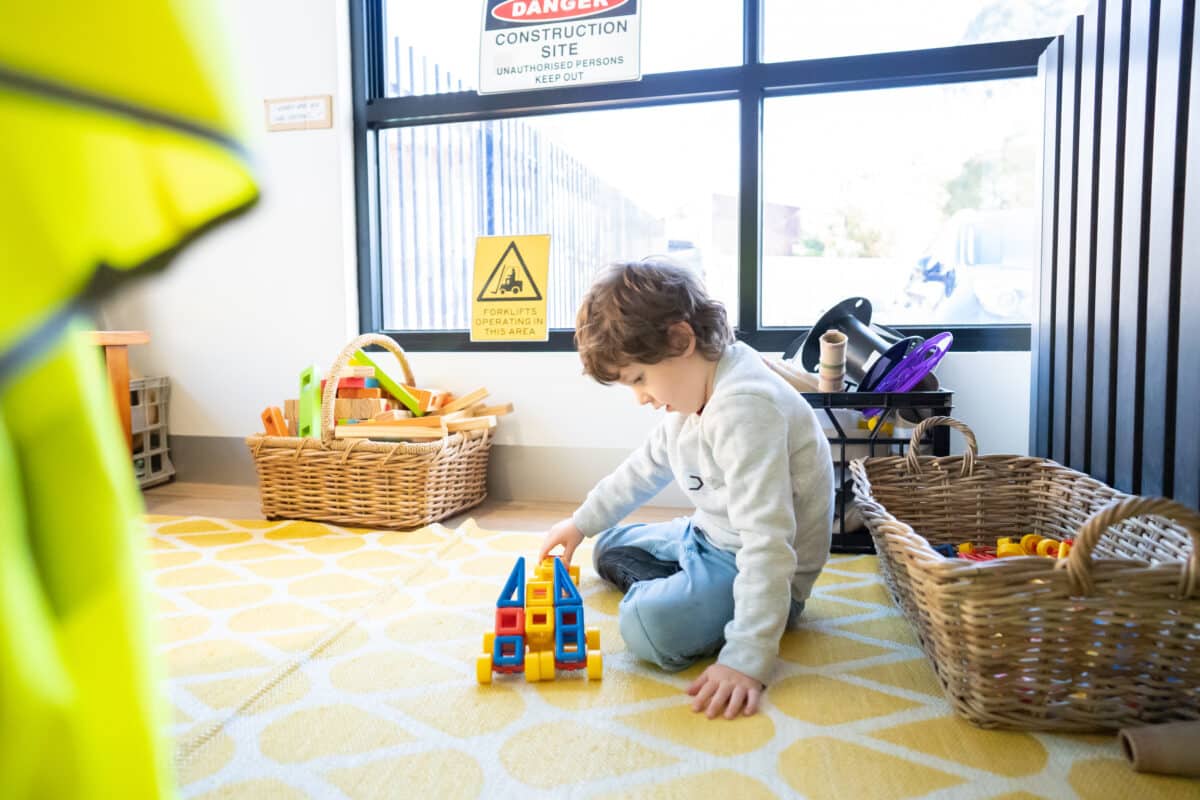
2. Setting the Table
Involve your toddler in the mealtime routine by setting the table together. Teach them to place plates, cups, spoons, and forks on their proper places.
This activity enhances fine motor skills and helps children understand the importance of family meals. In fact, studies suggest that family mealtimes boost children’s motivation, personal identity, and self-esteem. You might be surprised how eager children are to lend a hand when food’s on the way!
3. Sorting Laundry
While folding clothes might be too complex for toddlers, they can certainly help sort the laundry. Ask them to help you separate clean clothes by colour or type. This age-appropriate chore teaches children about categorisation and enhances hand-eye coordination.
You can even make a game of it. Invite them to sort all the red clothes into one pile and the blues in other.
4. Watering Plants
Toddlers love playing with water, so why not focus that enthusiasm into a chore? Give your child a small watering can and show them how to water indoor plants or a small garden outside.
This activity teaches children about the life cycle of plants and caring for all living things. Better yet, you can expand this experience by planting seedlings or starting a herb garden. This small act introduces your child to the wonders of nature and the importance of empathy.
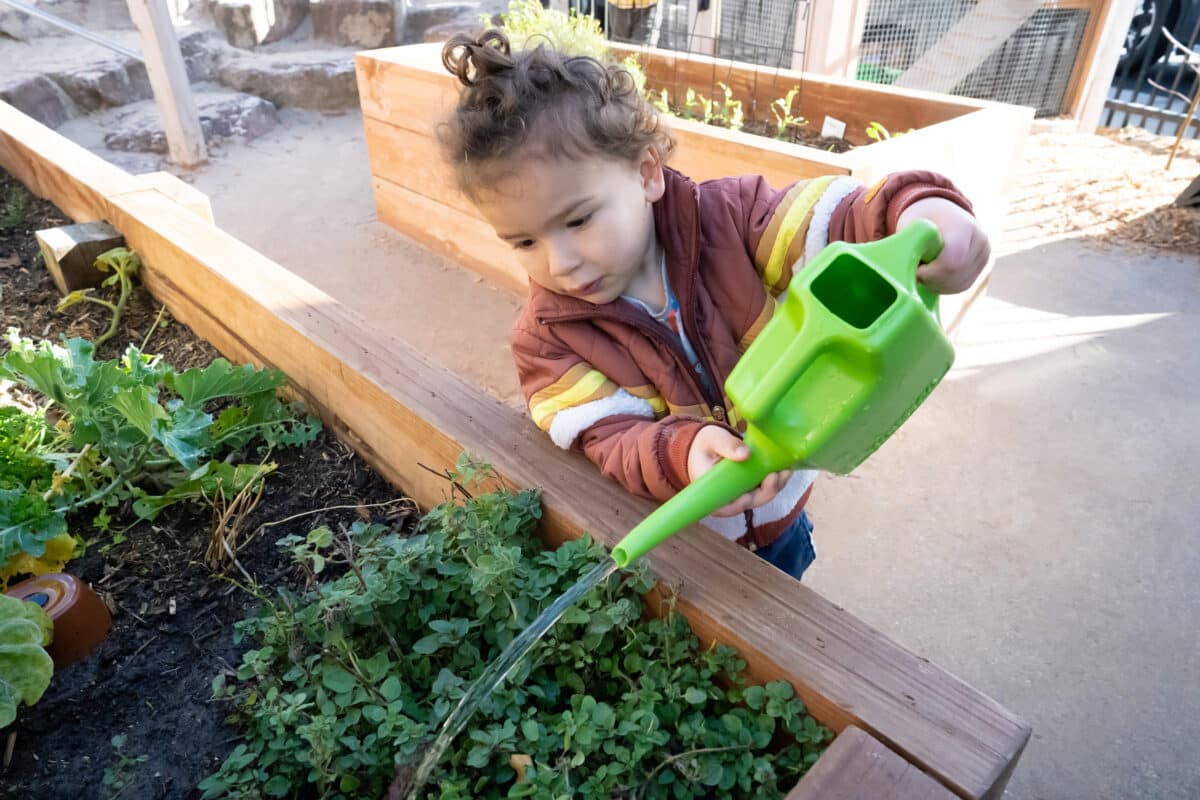
5. Wiping Surfaces
Give your toddler with a damp cloth and show them how to wipe surfaces such as tables, countertops, or windowsills. It won’t be perfect, but their efforts contribute to keeping the house clean and germ-free, while also honing their fine motor skills.
Just be careful not to assign them anything too dirty. Dust can kick up and may trigger nasty allergies or asthma. As with all items on this list, always supervise your child when engaging in these age-appropriate chores.
6. Feeding Pets
If you have pets, involving your toddler in their care is a wonderful way to teach responsibility and proper care. Help your child pour the right amount of food or water into your pet’s bowl.
This chore highlights compassion, empathy, and the importance of caring for all living things. Not to mention it makes for some great additions to the photo album!
7. Picking up Books
Encourage your child to tidy their bookshelf by picking up and organising their books. Likewise, demonstrate how to place books upright and stack them neatly. This chore nurtures children’s love for reading while also bringing a sense of orderliness to play areas.
You can also use this exercise to encourage reading, storytelling, and writing! Children love story time, so you can use this experience to combine responsibility and imagination.
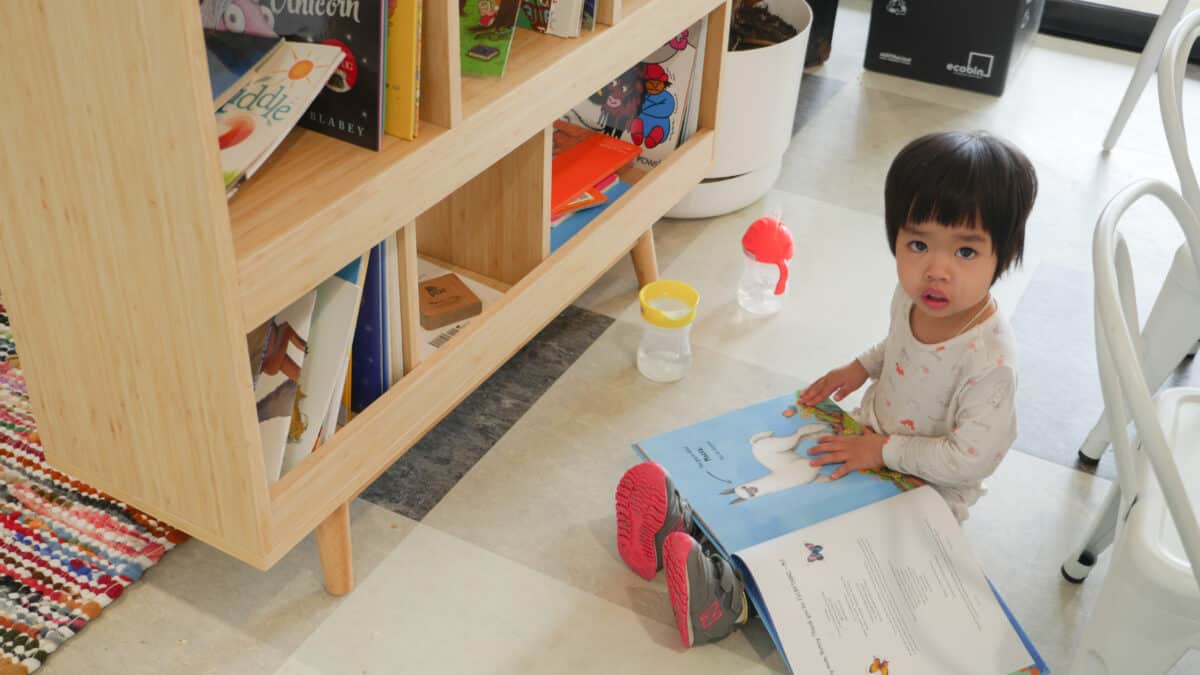
8. Help Prepare Meals
Invite your toddler to help prepare meals by peeling fruits, washing veggies, or rolling out dough. If your child isn’t quite ready for these tasks, something as simple as scooping cereal into the bowl provides a tremendous sense of independence.
Ultimately, age-appropriate chores are a fantastic way for toddlers to embrace independence, responsibility, and a sense of accomplishment. By making chores engaging and fun, it won’t be long before your child is actively participating in more complex household tasks.
Remember, it’s essential to offer guidance, praise their efforts, and make chores a positive experience. So be sure to empower toddlers and as they grow into responsible individuals who’ll be helping you bring in the groceries before you know it!
🍃 To tour one of our beautiful Centres, please click here. Otherwise, check out our website to register your interest at Explorers Early Learning today!
9 Fun Rainy Day Activities in Melbourne
Looking for some fun rainy day activities with the children? Read on for our must-visit attractions around Melbourne this winter 👇
Rainy days in Melbourne don’t have to be dreary! Instead of letting the cold weather get you down, embrace the opportunity to get the children out of the house and exploring Melbourne’s vibrant indoor attractions. Not only do these activities get children active, but they also get them engaging with the community and learning all kinds of physical and social skills.
Whether you’re a local or just visiting Melbourne for the weekend, here are our top 9 rainy activities for those wintery days.
1. Melbourne Museum
Take a trip through history and culture at the renowned Melbourne Museum. Explore fascinating exhibits, including natural history, art, science, and Aboriginal culture. Through interactive displays and engaging programs, the Museum offers an educational and entertaining experience for all ages.
Better yet, the Museum introduces children to the vast and fascinating history of our planet. Importantly, that history is pretty cool – filled with amazing creatures and natural events.
If you’re planning on visiting the Museum, be sure to check out the Museum’s Pauline Gandel Children’s Gallery. This exhibition is for babies all the way up to age 5, and features hands-on exploration, play-based learning, immersive environments, and unique exhibits the little ones are sure to love!
2. Live Theatre
Worried your child is spending too much time on screens? Take them to the live theatre instead! There are loads of age-appropriate performances for children around Melbourne, from magic shows to Disney on Ice.
Not only are live theatre shows a wonderful day out of the cold, but they also teach children valuable social skills. Unlike television shows or movies that can often overstimulate children, live theatre requires children to exercise concentration and patience, while also boosting their attention spans.
3. Aquarium
Dive into an underwater wonderland at SEA LIFE Melbourne! A trip to the Aquarium introduces your little one to a whole new world filled with breath-talking natural creatures and environments. From majestic sharks to adorable penguins, your child is sure to enjoy this aquatic day out.
Explore interactive exhibits, walk through tunnels surrounded by captivating sea creatures, and learn about the importance of ocean conservation. And who knows – you might just inspire a future marine biologist.

4. Legoland
For Lego enthusiasts over three years of age, the Legoland Discovery Centre is a must-visit this winter. Legoland is an open-ended experience filled with creativity and imagination through an abundance of Lego-themed activities and attractions.
Together, you and your child can build and race Lego cars, explore miniature Lego cities, and construct anything their not-so-little imaginations can conjure – the possibilities are endless. Additionally, Lego boosts children’s fine motor skills and problem-solving abilities, helping them become better learners.
5. Cook Together
Rainy days provide the perfect opportunity to stay indoors and indulge in some culinary creativity. Gather the children, choose a recipe, dust off the whisk and embark on a cooking adventure as a family.
Cooking is also a great learning experience for children. They engage with all kinds of smells, textures, and chemical reactions from the boiling of the pot to the oil floating in water. You can also use this as an opportunity to explore measurements and reading instructions. Additionally, cooking helps children identify different fruits and vegetables, food storage, and general kitchen safety.
Importantly, it teaches children that food can be tasty and good for you.
6. The Library
Escape the rain by delving into the exciting world of books at one of Melbourne’s many public libraries. Whether you’re raising a little bookworm or just trying to get them away from the screens for an afternoon, libraries offer a peaceful and stimulating environment for children of all ages. Introduce them to captivating board books, discover new authors, or participate in children’s book club discussions and events.
The library is also a great way to meet local families to organise play groups so your little one can make new friends!
7. Get Crafty
A day inside is the perfect opportunity to challenge your child to get crafty. With just a few materials, you can finger paint, stamp craft, or make some clay masterpieces. Arts and crafts are always a hit with children, as it encourages them to explore their creativity and see a project through from start to finish. In other words, it teaches them the nature of cause and effect.
The best part is there’s no right or wrong way – just get your child’s imagination active!

8. ArtVo
Unleash your creativity and immerse your child (and yourself) in the mind-bending optical illusions at ArtVo Melbourne. This interactive art gallery provides a unique experience where you become part of the artwork.
Strike a pose, take amazing photos, and let your imagination run wild as your child explores the captivating 3D paintings. This is the perfect way to introduce children to the mind-bending nature of perspective, geometry, and how things aren’t always as they seem.
9. Museum of Play and Art (MOPA)
Experience a world of creativity and play at the Museum of Play and Art (MOPA). This interactive experience offers hands-on exhibits and activities designed to ignite the imagination of children and adults alike. From sensory play areas to art workshops, it’s a rainy day haven for budding creatives.
And don’t take our word for it. Visit Victoria called MOPA ‘Australia’s most acclaimed Children’s Museum.’ This is a day out you don’t want to miss – they also make a great coffee!
Overall, rainy days in Melbourne don’t have to be dull. With these 9 fun indoor activities, you can make the most of these precious moments with your child, while also staying dry. From live theatre and museums to playing with Lego, there’s something for everyone to enjoy. So why not embrace everything that Melbourne has to offer and create some unforgettable memories?
🍃 To tour one of our beautiful Centres, please click here. Otherwise, check out our website to register your interest at Explorers Early Learning today!
How is Easter Celebrated Around the World?
Have you ever wondered how Easter is celebrated in different countries? Read on for all the unique ways Easter is celebrated around the world!
Easter is one of the most widely celebrated holidays in the world, with at least 95 countries embracing the chocolate eggs and hot cross buns. Although it’s often associated with Christian traditions and Western culture, it’s also observed in various cultural contexts. From Easter egg hunts to religious processions, the celebration of Easter is a rich tapestry of customs, beliefs, and practices.
In this post, we look at some of the unique ways Easter is celebrated around the world.
1. Germany
They love Easter in Germany! One of their most famous holiday traditions is that of the Easter Egg tree, otherwise known as ostereierbaum. This tradition involves decorating trees and bushes with hand decorated eggs, creating colourful displays from the natural landscape.
Branches are also used and decorated in homes (similar to a small Christmas tree), while larger trees are displayed in local parks.
The biggest Easter Egg tree stood for 50 years in Saalfeld, Germany, which held up to 50,000 eggs – all hand decorated by one German family.
2. Sweden
In Sweden, Easter is celebrated with the tradition of the Easter Witch. Children (and even some of the grown-ups) dress up as witches, complete with broomsticks, headscarves and painted faces. The ‘witches’ then go door-to-door, offering painted eggs in exchange for sweets, similar to Halloween trick-or-treating. The tradition dates back centuries and is still observed by Swedish locals to this day!
3. Italy
For many Catholics around the world, Easter is the most important time of year. In Rome – one of the most devout cities in the world – Holy Week is a particularly significant event, with various processions and religious ceremonies occurring throughout the week.
On Good Friday, a procession takes place in which the Pope leads the fourteen stations of the cross from the Colosseum, with thousands of people following behind, carrying candles. The children get involved in the festival by singing songs and assisting in church services.

4. South Africa
Easter in South Africa is a time for faith, food and family. Locals typically gather for an afternoon church service on Easter Sunday, followed by a family get together to enjoy traditional South African foods such as roast lamb, pickled fish and braai (South African barbecue).
However, since the 1980s, the day after Easter Sunday is recognised as Family Day. This is an official public holiday which is observed to encourage families from all faiths to spend the day with their loved ones.
5. Greece
In Greece, Easter is celebrated with the Orthodox Christian tradition of the Holy Fire. The night before Easter Sunday, a flame is lit at the Church of the Holy Sepulchre in Jerusalem and flown to Greece, where it is used to light candles in churches across the country.
This tradition dates back 1,200 years, and is celebrated widely as the flame is believed to be a symbol of the resurrection of Christ. Crowds of up to 10,000 gather around the Holy Sepulchre for the event, chanting ‘Kyrie eleison’ which translates to ‘Lord, have mercy.’
6. Bermuda
When you think of Easter, kites probably don’t come to mind. However, in Bermuda, no Good Friday is complete without the locals getting out into the fresh air and flying homemade kites around the natural landscapes.
The origin of this tradition dates back to a Bermudan Sunday school teacher explaining the resurrection of Christ through a kite demonstration. Ever since, kites and Easter have become intertwined in Bermuda.
7. Poland
On Easter Sunday, Poles get up bright and early (6am) for the Resurrection mass. Following the service, families gather for a hearty breakfast of cold meats, eggs, bread and pâté. Cakes, sweets and cheesecakes are enjoyed throughout the day, making Polish Easter one of the tastiest around the world!
The Monday after, however, takes an interesting twist with children throwing buckets of water on each other in a tradition known as Wet Monday (they take water fights very seriously!).
8. Brazil
In Brazil, the town of Ouro Preto is known for its elaborate Holy Week celebrations. The town’s churches and roads are decorated with flowers and lights, making brilliant artwork throughout the streets. Additionally, processions take place throughout the week, with participants carrying images of Jesus Christ and the Virgin Mary.
Easter is a holiday that is celebrated in many different ways around the world, each with its unique traditions and customs. Whether it’s a religious procession, the decoration of Easter trees, dressing up as witches or just enjoying some hot cross buns, Easter is a time to come together with family and friends, celebrate the arrival of spring, and reflect with those closest to you.
🍃 To tour one of our beautiful Centres, please click here. Otherwise, check out our website to register your interest at Explorers Early Learning today!
Healthy (and Tasty) Easter Treats for Children
Easter is a time for family, fun, and treats! However, it’s also a time where we can get carried away with sugar-filled, highly processed chocolates. Read on for our comprehensive list of 7 creative treats for your child’s basket this Easter!
Easter is a time for family, fun, and of course, treats! A little chocolate won’t hurt, but it’s easy to get carried away and load up the little one’s baskets with sugar-filled, highly processed eggs and chocolate bunnies.
If you’re looking for a healthier option this year, there are plenty of creative options for making an Easter basket that’s still filled with fun and tasty treats. Here are seven healthy Easter treats for your child’s basket!
1. Rabbit-Shaped Sandwiches
Sandwiches are a great way to get creative while also providing a healthy meal for the little ones. Simply use a bunny-shaped cookie cutter over multigrain sandwiches filled with delicious fillings like ham, turkey, cheese and plenty of veggies.
You can also incorporate the Easter theme into the fillings like egg salad, cucumbers and shredded carrot! Feel free to make them as creative as possible, as children are more likely to engage with healthy eating when it’s colourful and fun.
2. Carrots and Hummus
Carrots are a fitting snack for Easter, as they’re the Easter Bunny’s favourite treat. Experiment with veggies to make little bunnies, creative platters or baby carrot flowerpots. Additionally, hummus comes in a range of flavours and variations for even the fussiest of eaters.
Best of all, hummus is full of nutrients, fibre and protein which are essential for growing bodies. If you’re going for storebought, just avoid anything too spicy for the little ones! There’s loads of recipes online to make your own, which can be a wonderful bonding experience.

3. Fresh Fruit
Fill your child’s Easter basket with a variety of colourful fruits, such as sliced apples, bananas, oranges, berries or grapes. Fresh fruit is rich in vitamins, minerals, and antioxidants which are vital to children’s physical and psychological development.
Additionally, fruits – especially grapes and berries – are naturally sweet, making them a great alternative to lollies and chocolate. Just add a small container of grapes or berries to your child’s basket, or even freeze them for a fun and refreshing treat.
4. Popcorn
Popcorn is an underrated healthy snack. It can be salty or sweet and it’s full of fibre and important antioxidants. Pop or your own or opt for store bought, just be sure to read the labels carefully. Many store-bought popcorns are filled with sugar, butter and salt.
You can then portion out the popcorn and get decorative with colourful packaging, ribbons and cards!
5. Homemade Easter Treats
Children love helping out in the kitchen – they just don’t like to clean up the mess! Get the little ones involved in the kitchen to make a whole range of healthy easter treats such as carrot cake bites, hot cross buns, muffins, biscuits, banana bread, energy balls or fruit leather.
This is a great way to get creative in the kitchen while also providing children with a healthier alternative to store-bought treats that are often filled with loads of sugar and nasty preservatives.

6. Chocolate Covered Fruit
Remember, creating a healthy Easter basket is all about balance and moderation. Therefore, coating healthier foods like strawberries, bananas, kiwi fruit or watermelon is a great way to get the best of both worlds. It’s still chocolate, but not in the dense blocks or eggs you’ll find in a typical Easter basket.
This is also a great opportunity to get creative with platters, colours and designs. And remember – you don’t need to cover the entire fruit. A half-covered strawberry or the tip of a mandarin slice is a tasteful, and aesthetic, way to manage your child’s chocolate intake.
7. Sugar-free Chocolate
If pure chocolate is a must, consider a sugar-free (or low sugar) option. These are made with natural sweeteners such as stevia, without comprising the taste. The lack of sugar will result in less hyperactivity, sugar crashes, and trips to the dentist in the long term.
In recent years, sugar-free alternatives to everyday treats have exploded in popularity. Most supermarkets now stock ample sugar-free and low sugar alternatives in their health food aisles.
Just remember to always get your little one to brush after eating even these sugar-free treats. For tips on how to get your little one brushing, check out our blog post here.
Overall, Easter baskets don’t have to be a pit of sugar-filled, processed chocolate and sweets. In fact, they’re an opportunity to teach children about healthy eating and to broaden their palette. Through a mixture of homemade and storebought Easter basket treats, you can ensure your child indulges their sweet tooth.
Happy Easter!
🍃 To tour one of our beautiful Centres, please click here. Otherwise, check out our website to register your interest at Explorers Early Learning today!